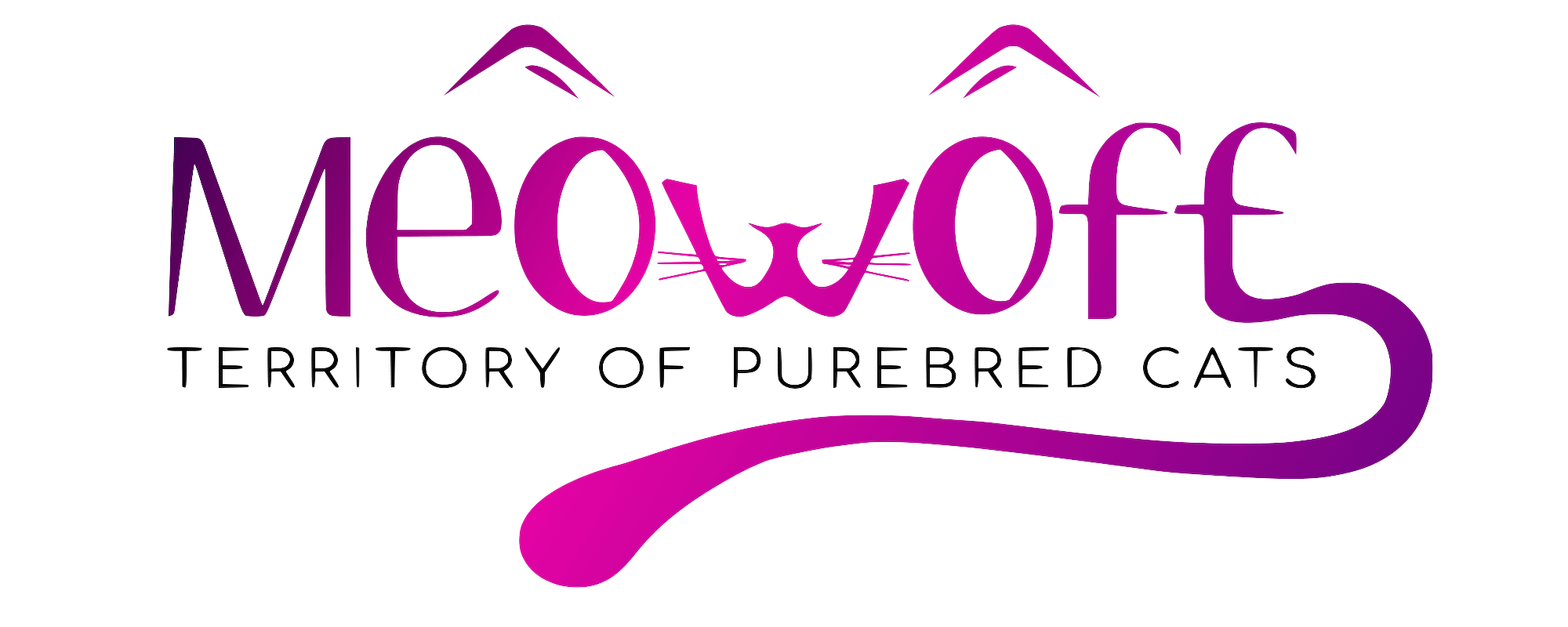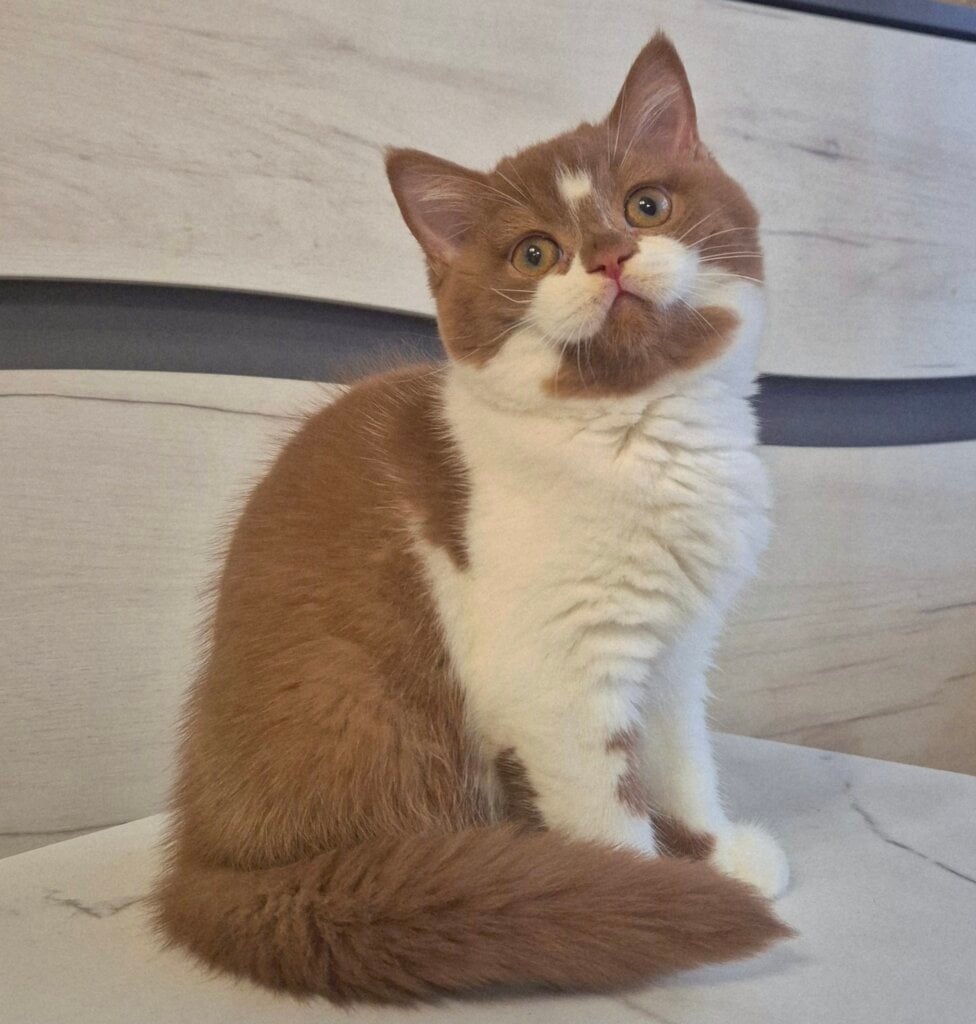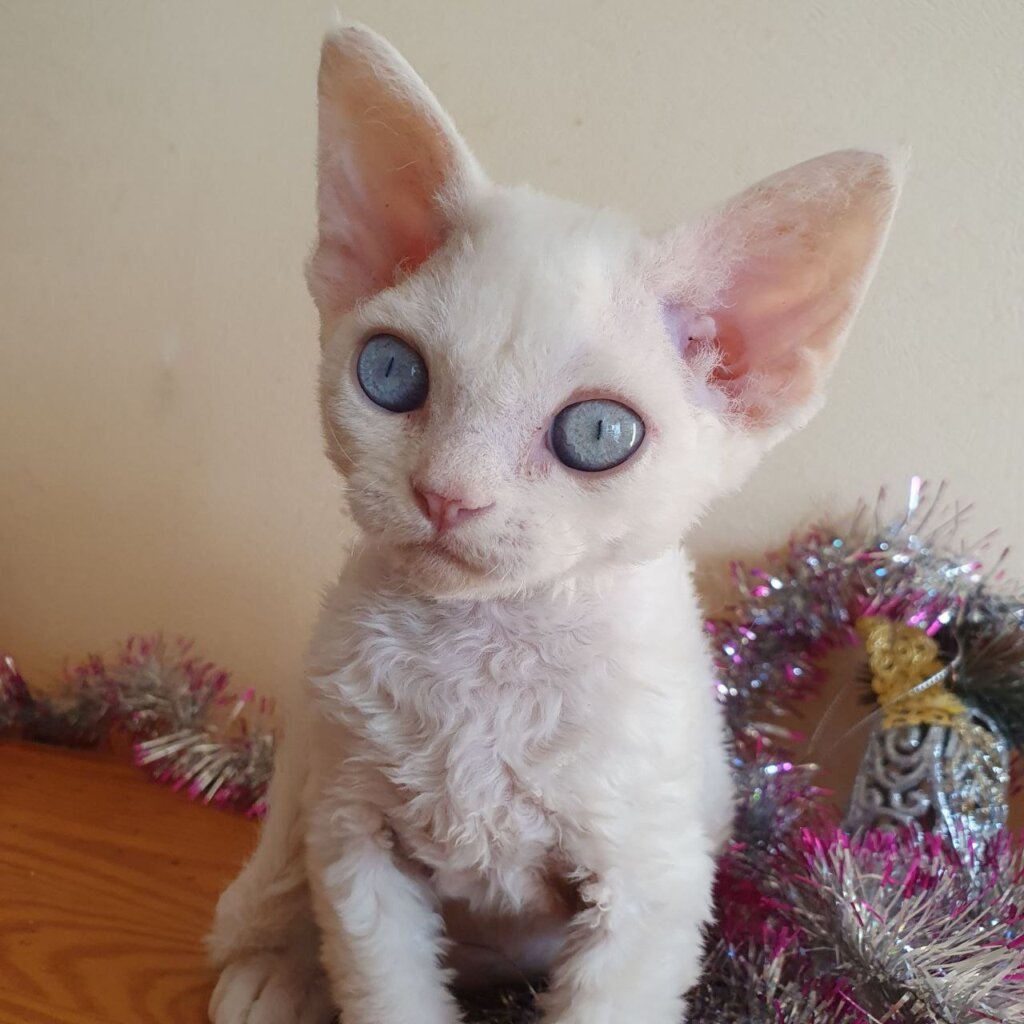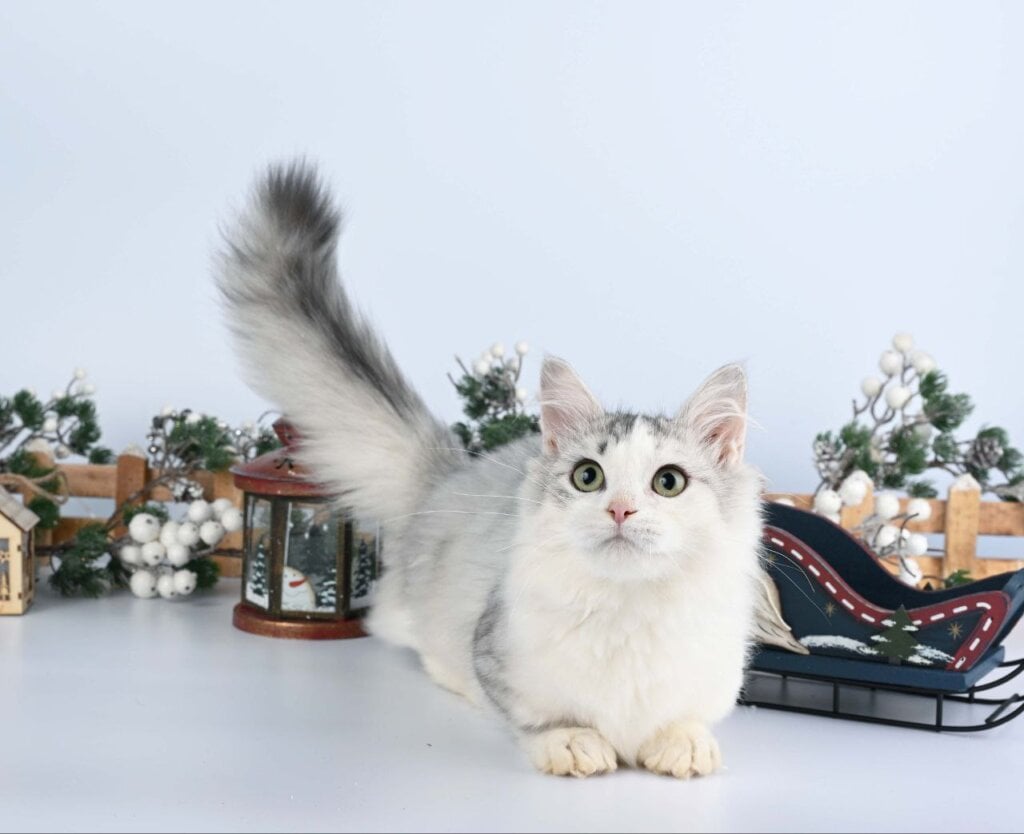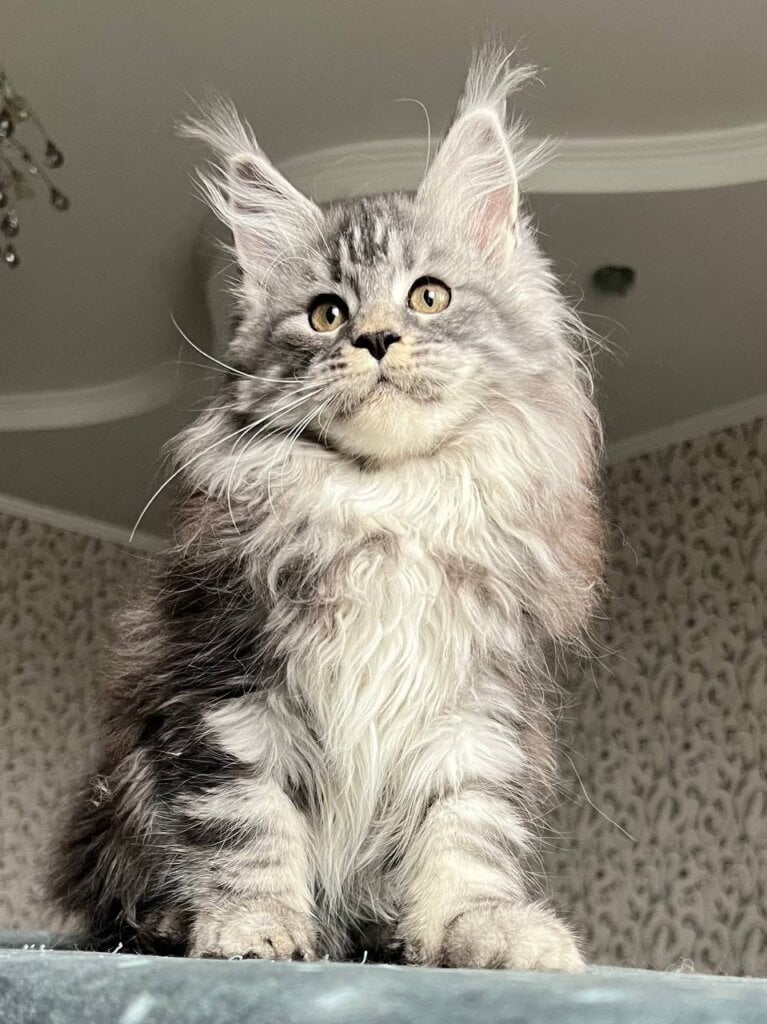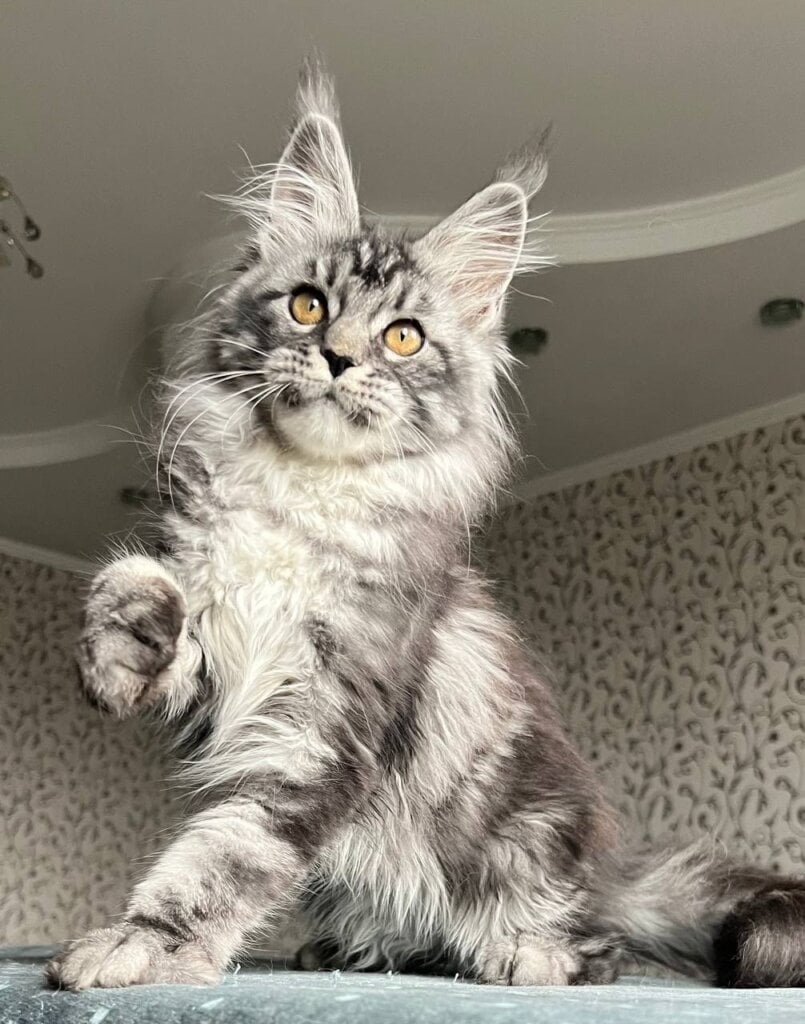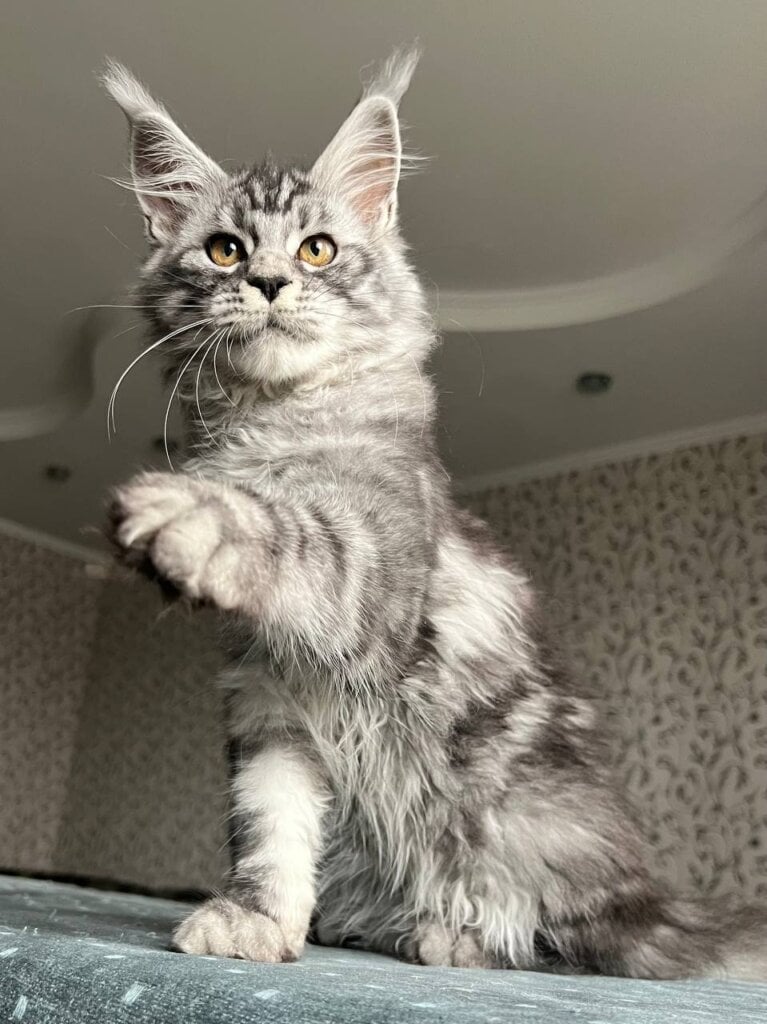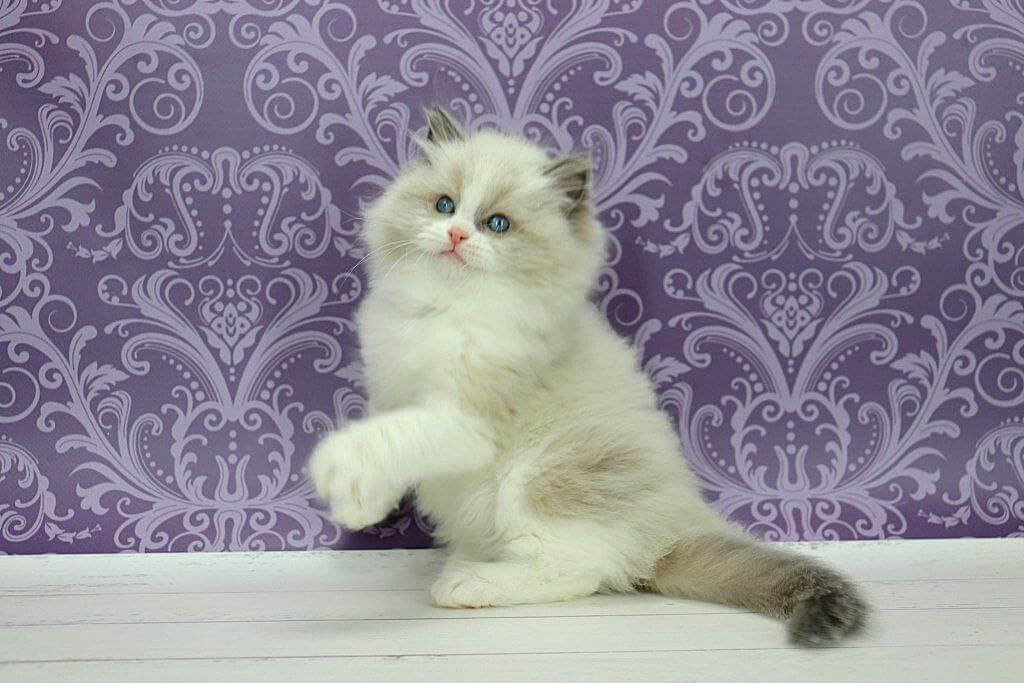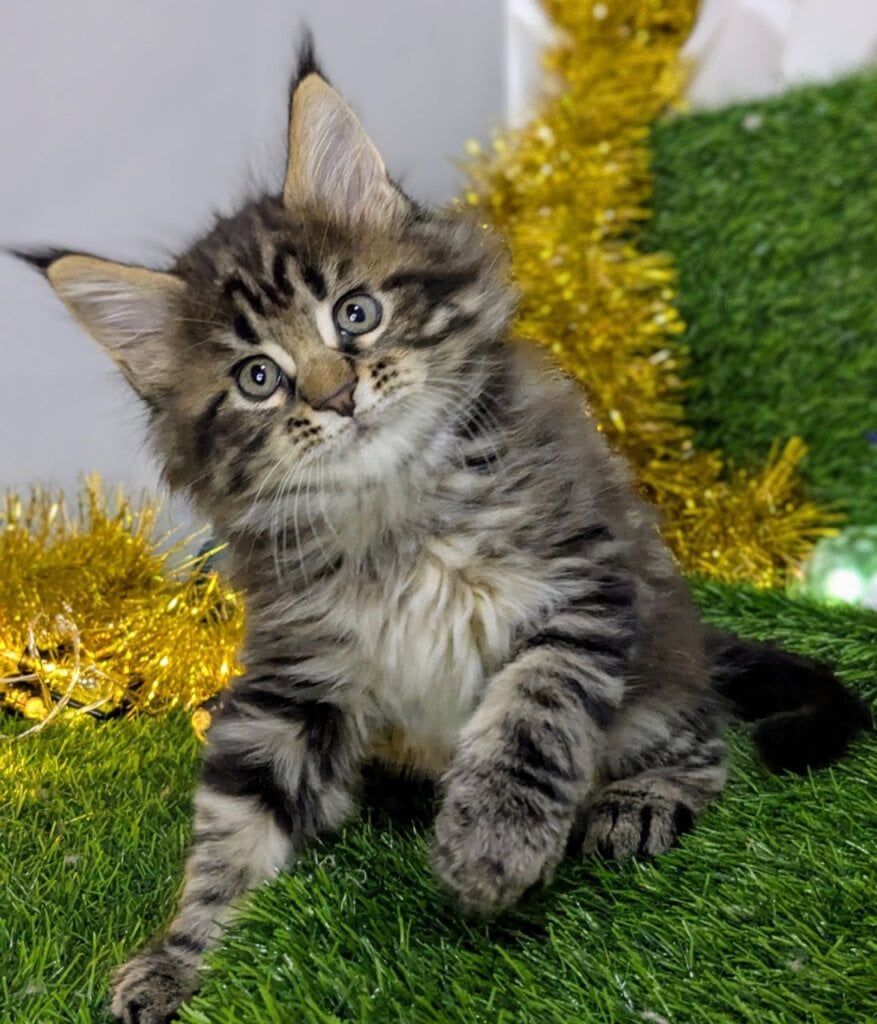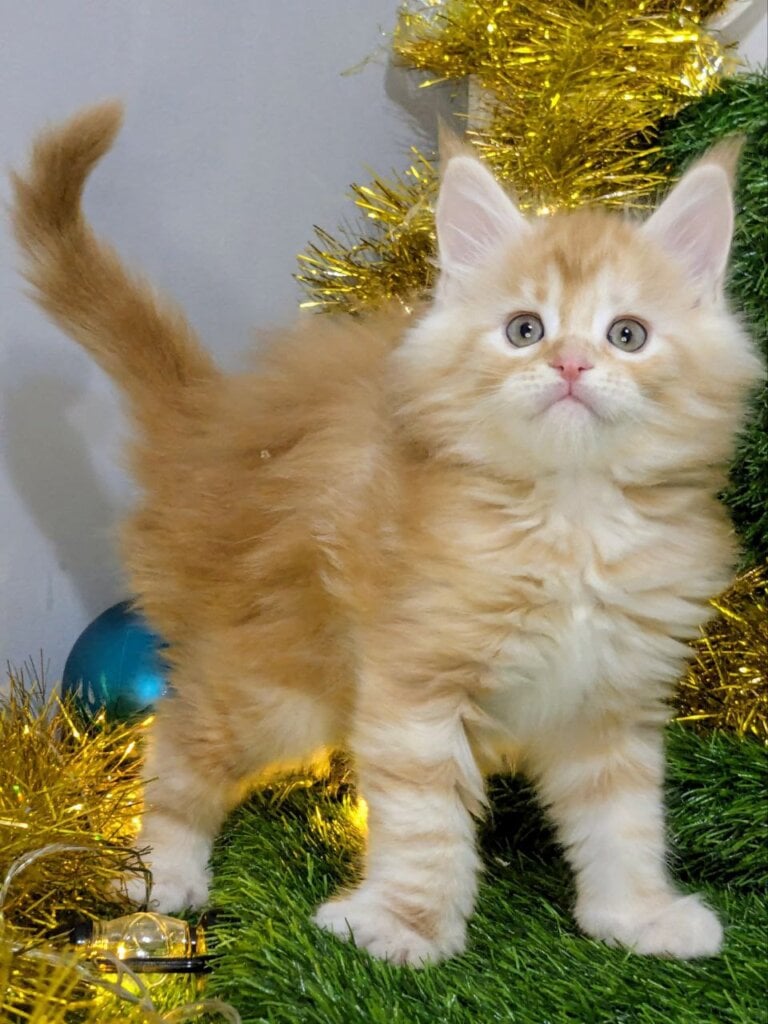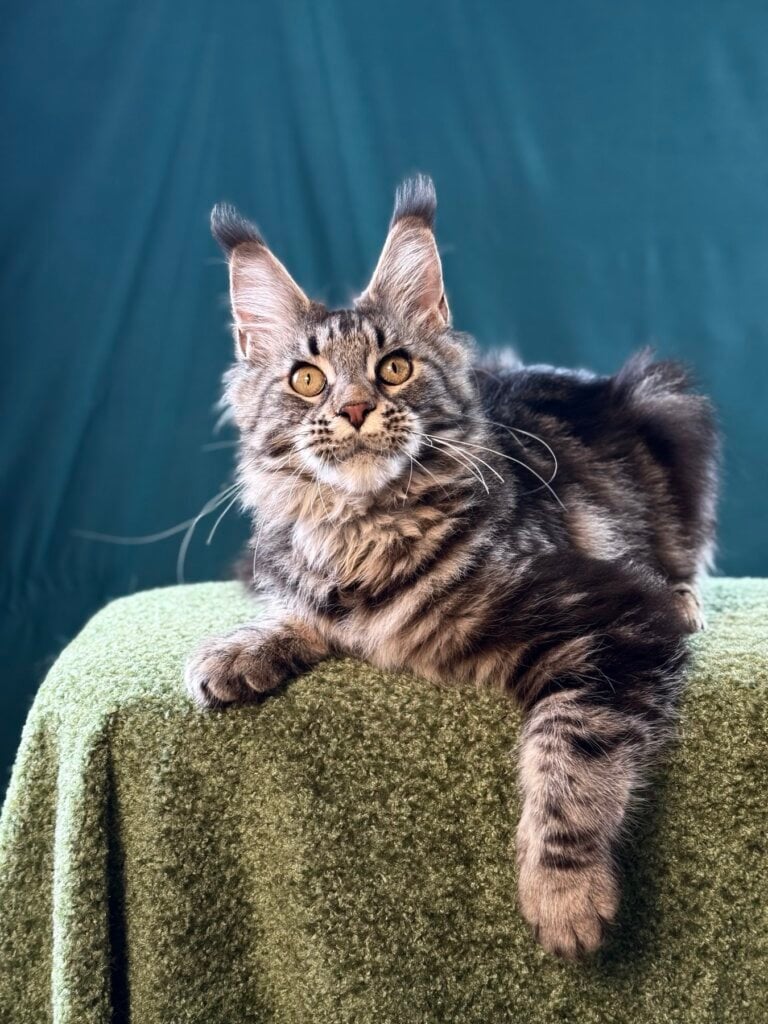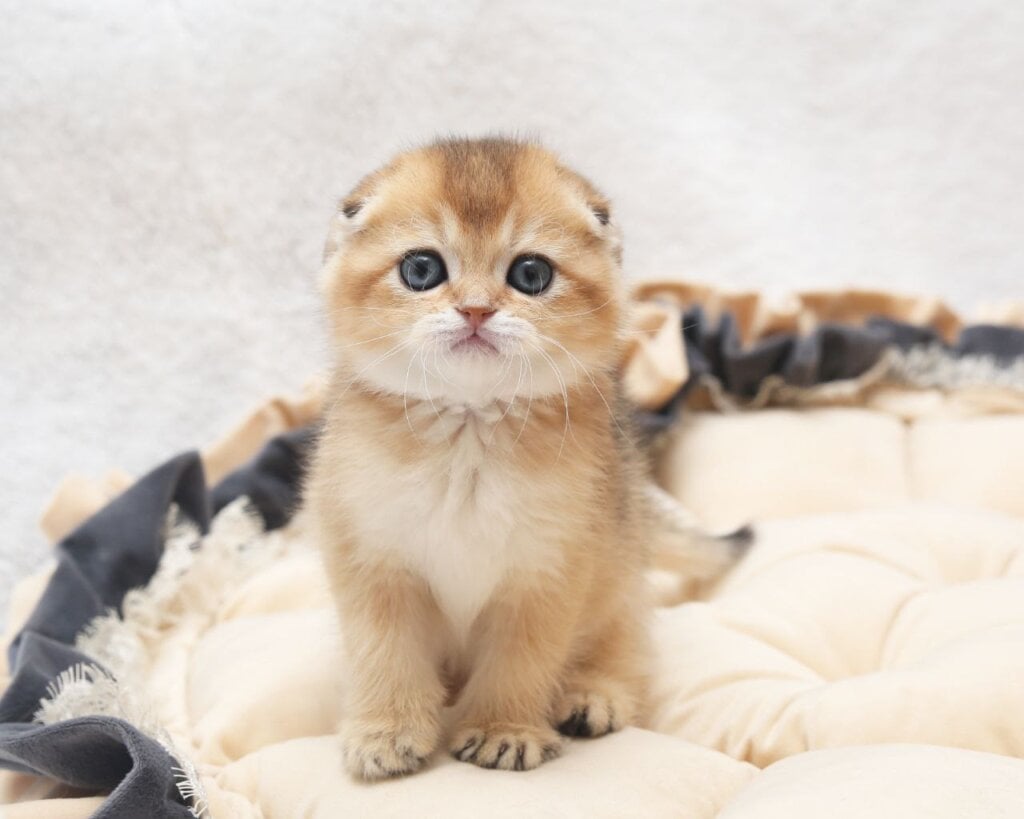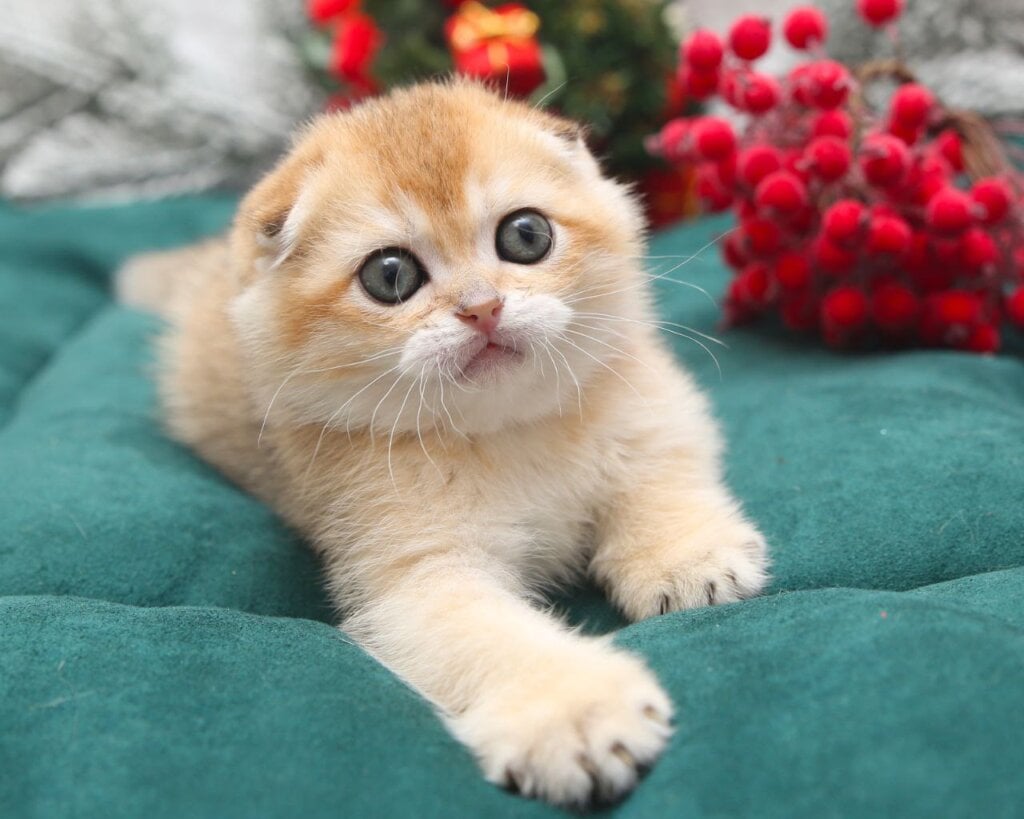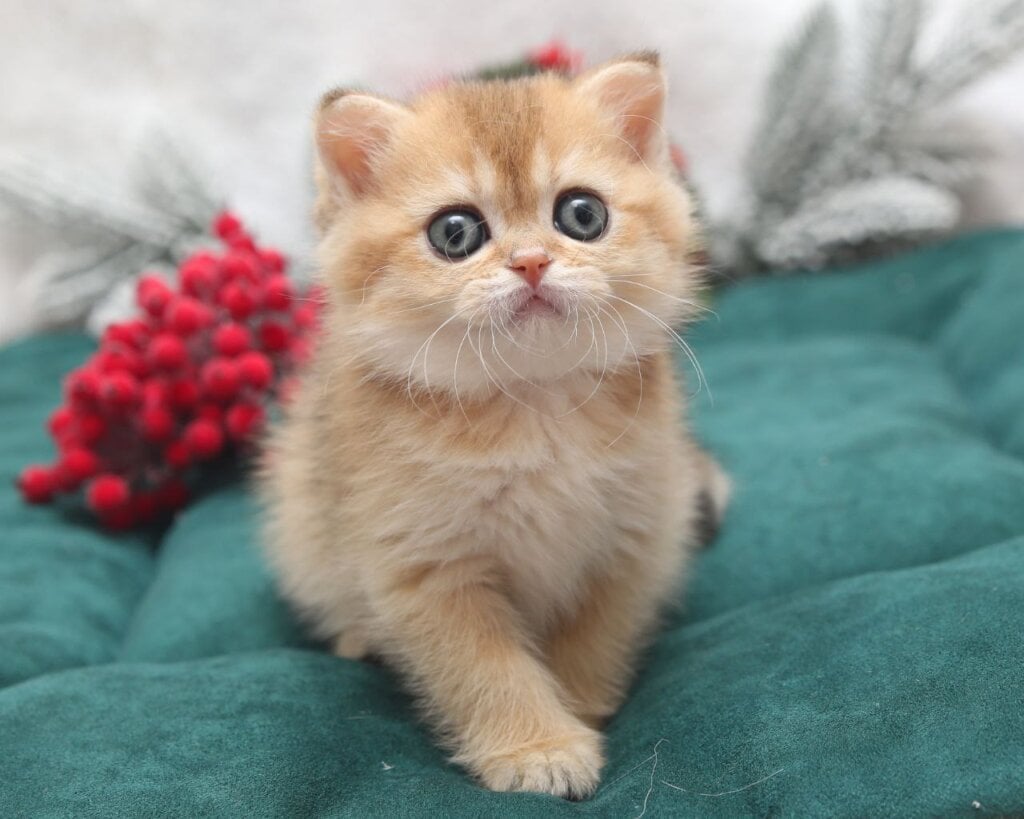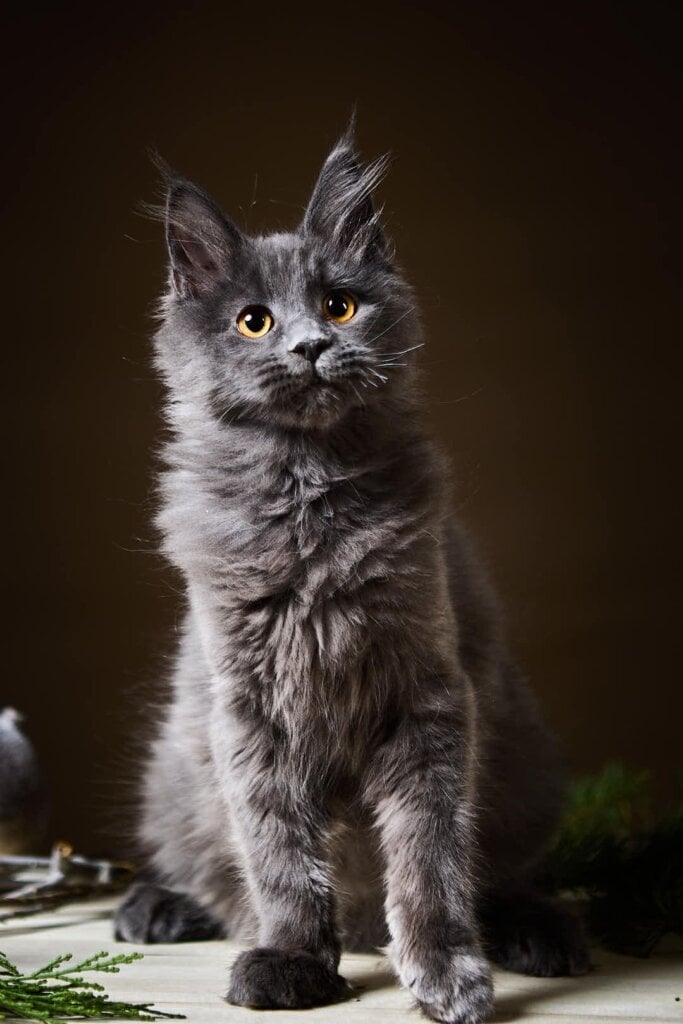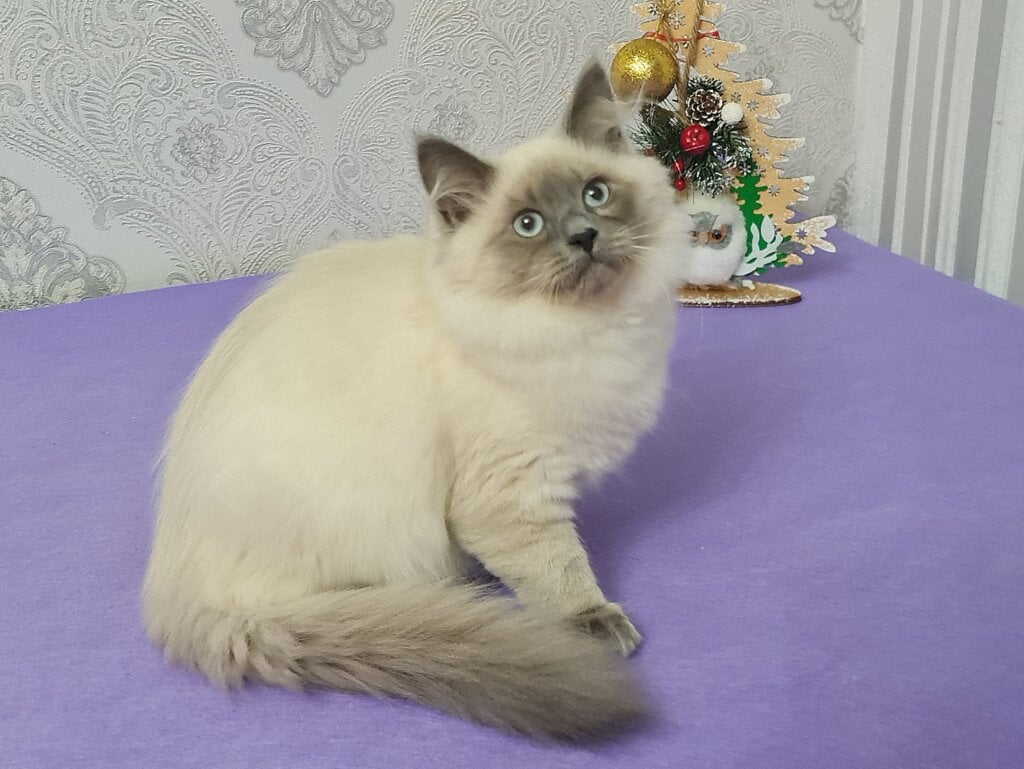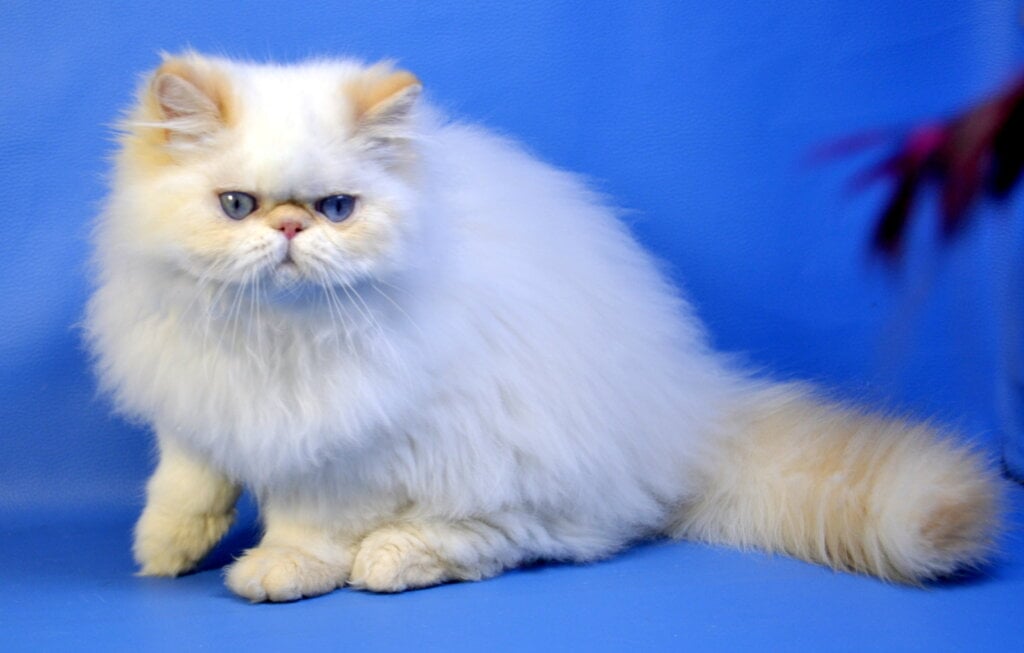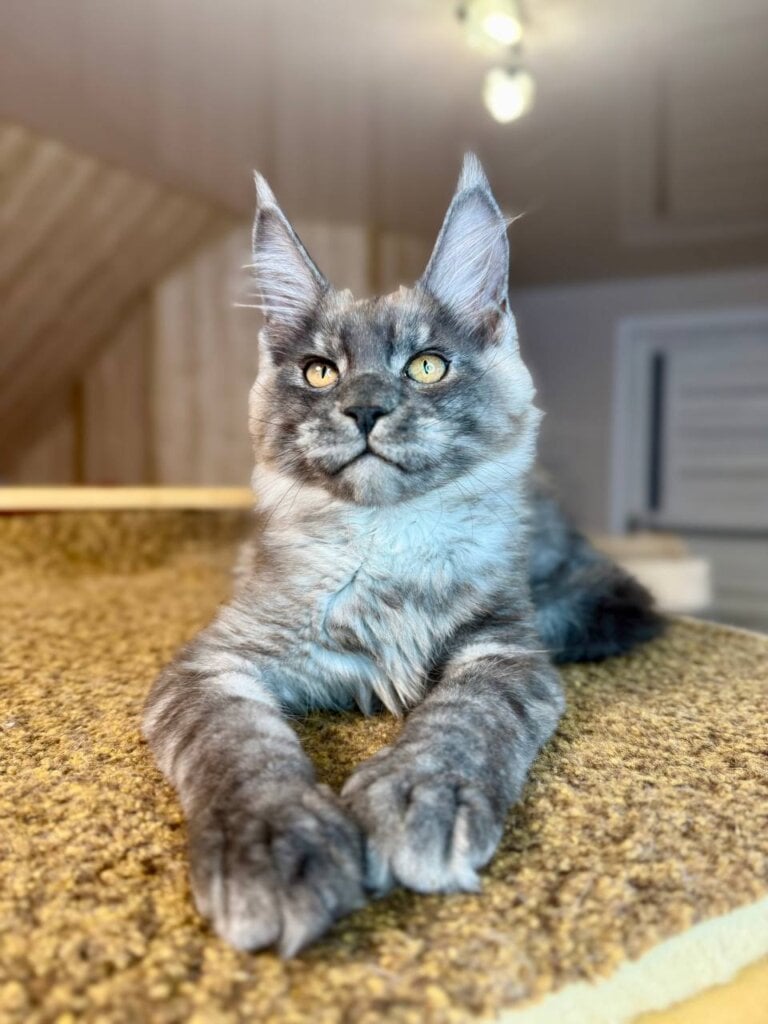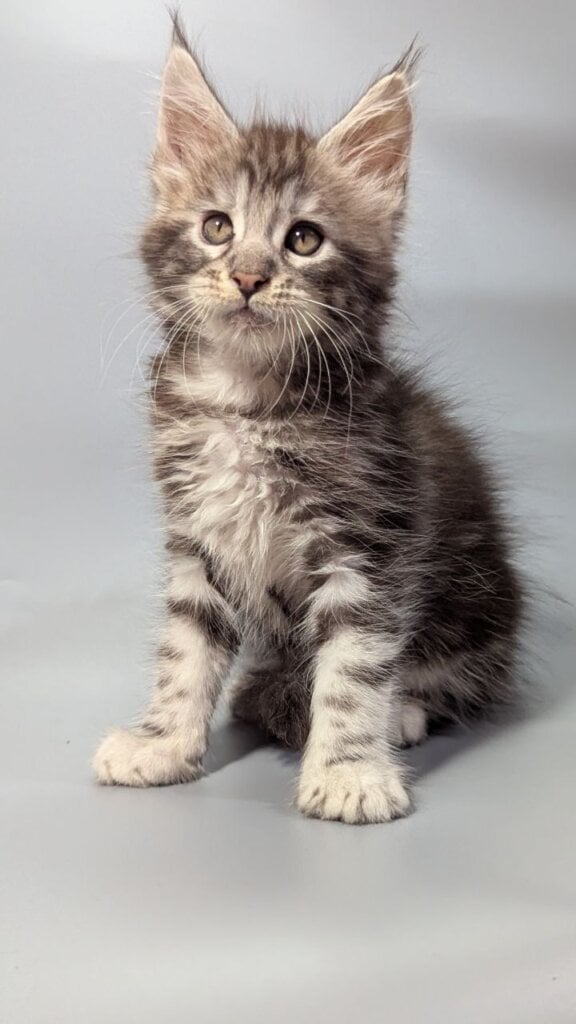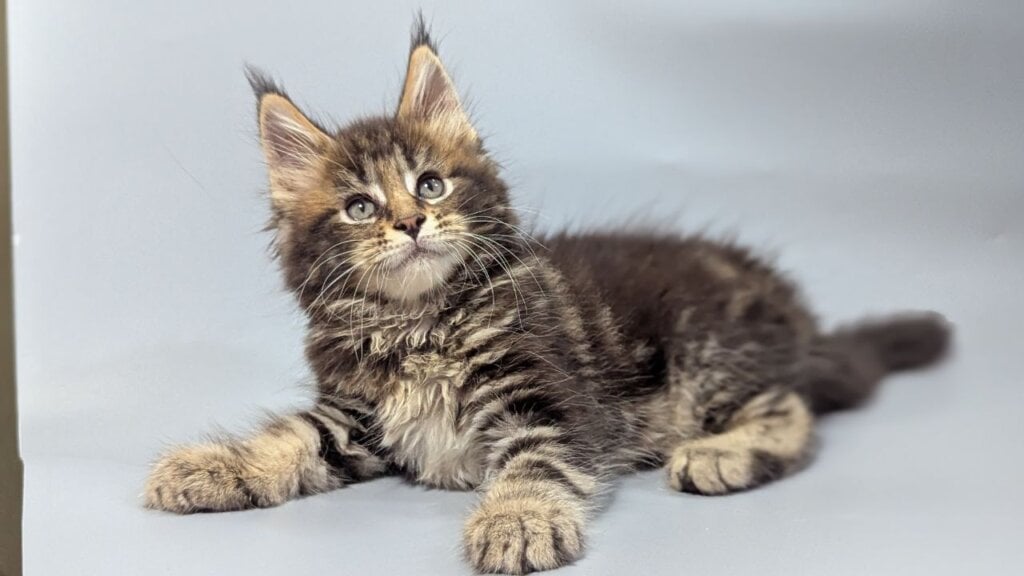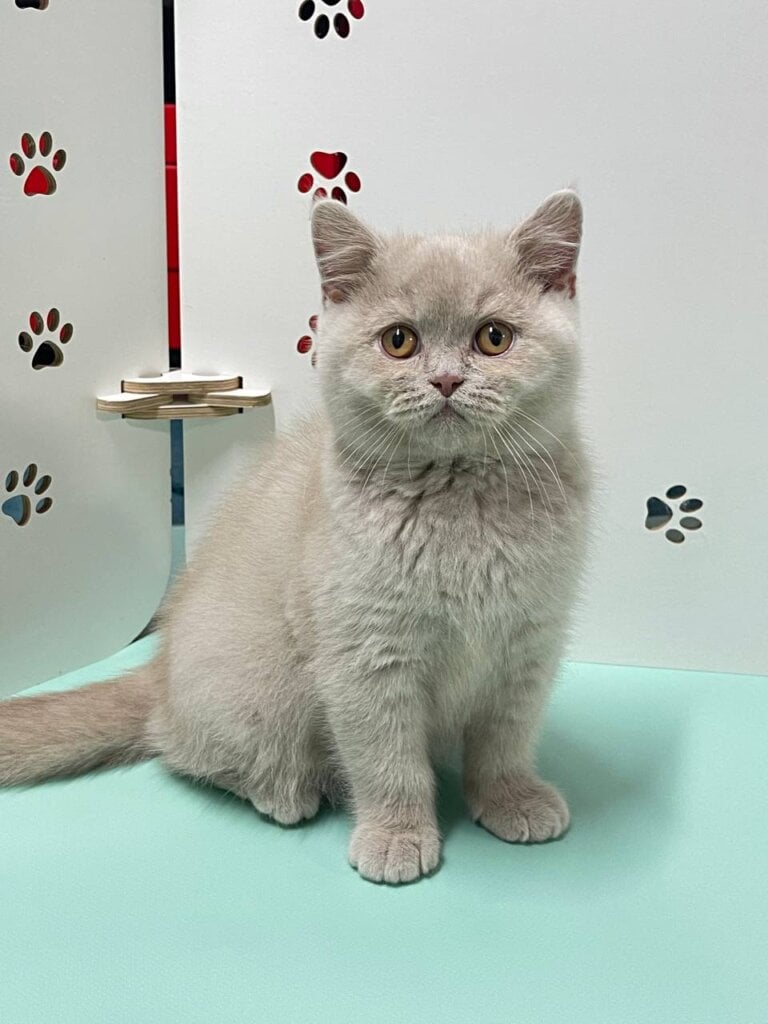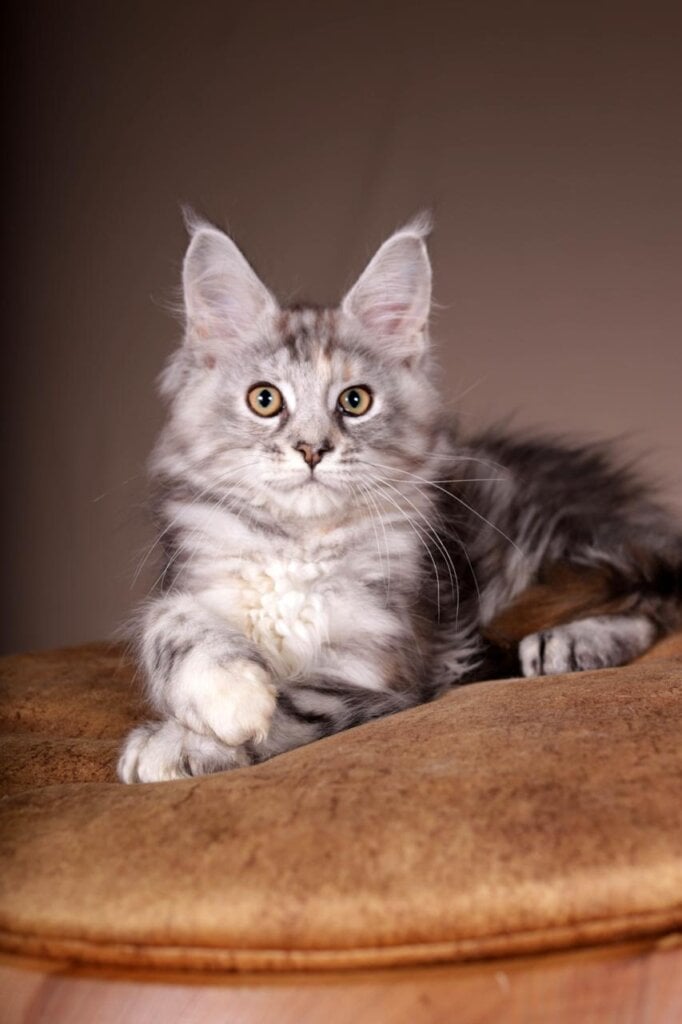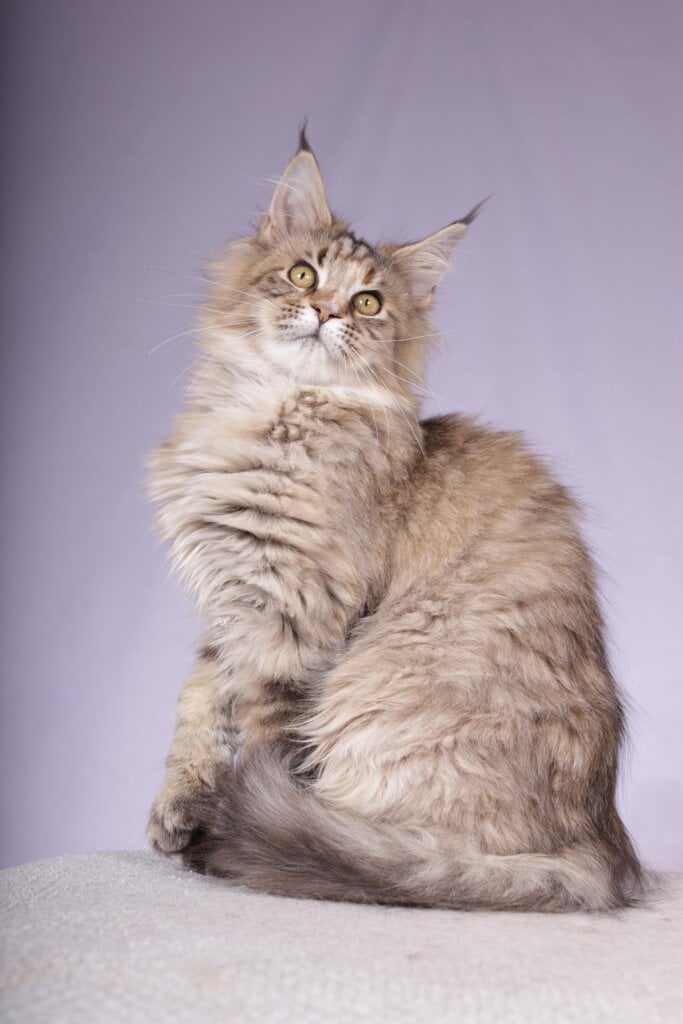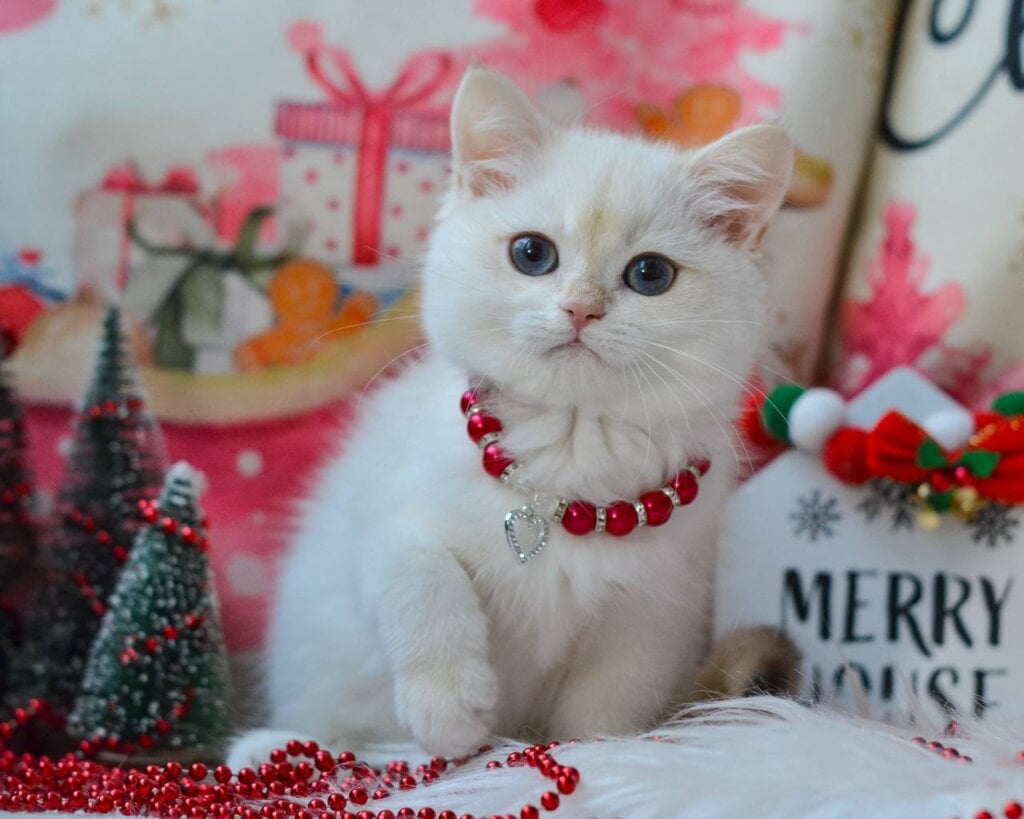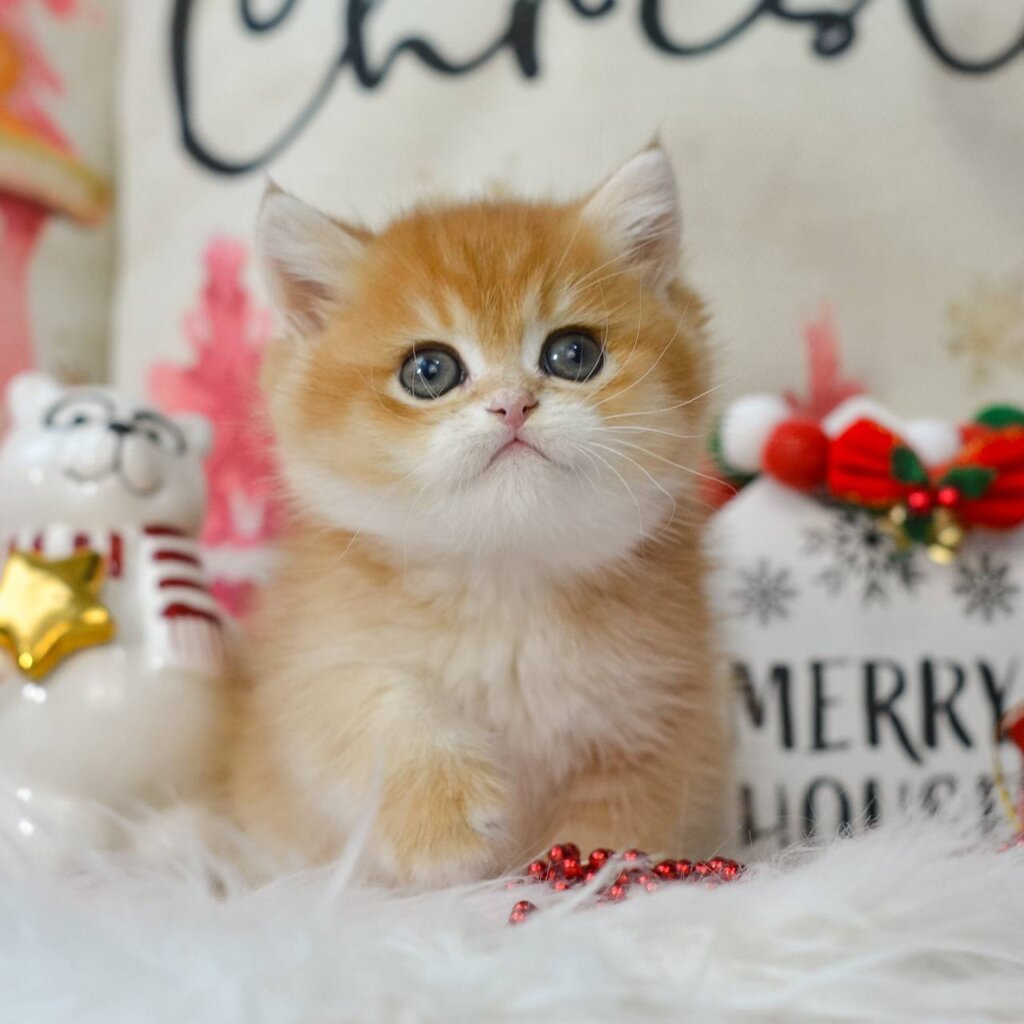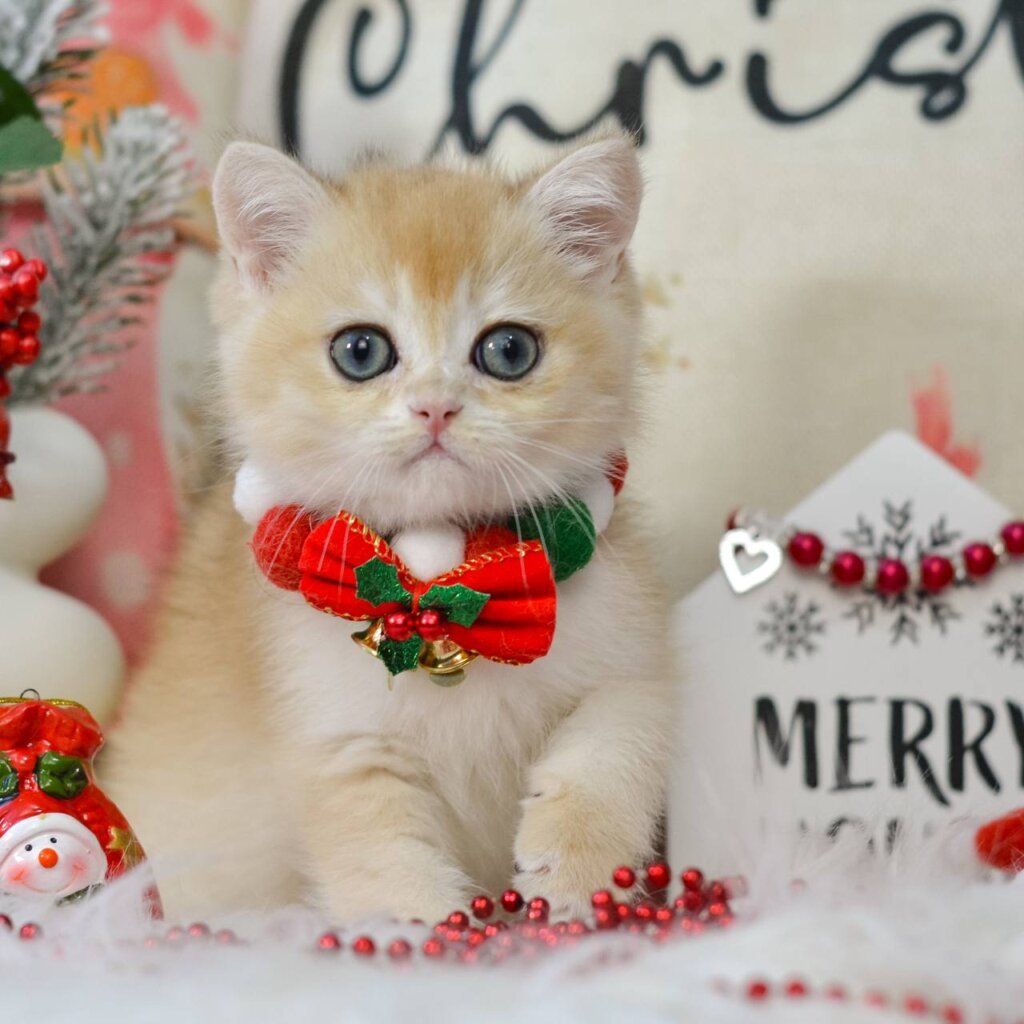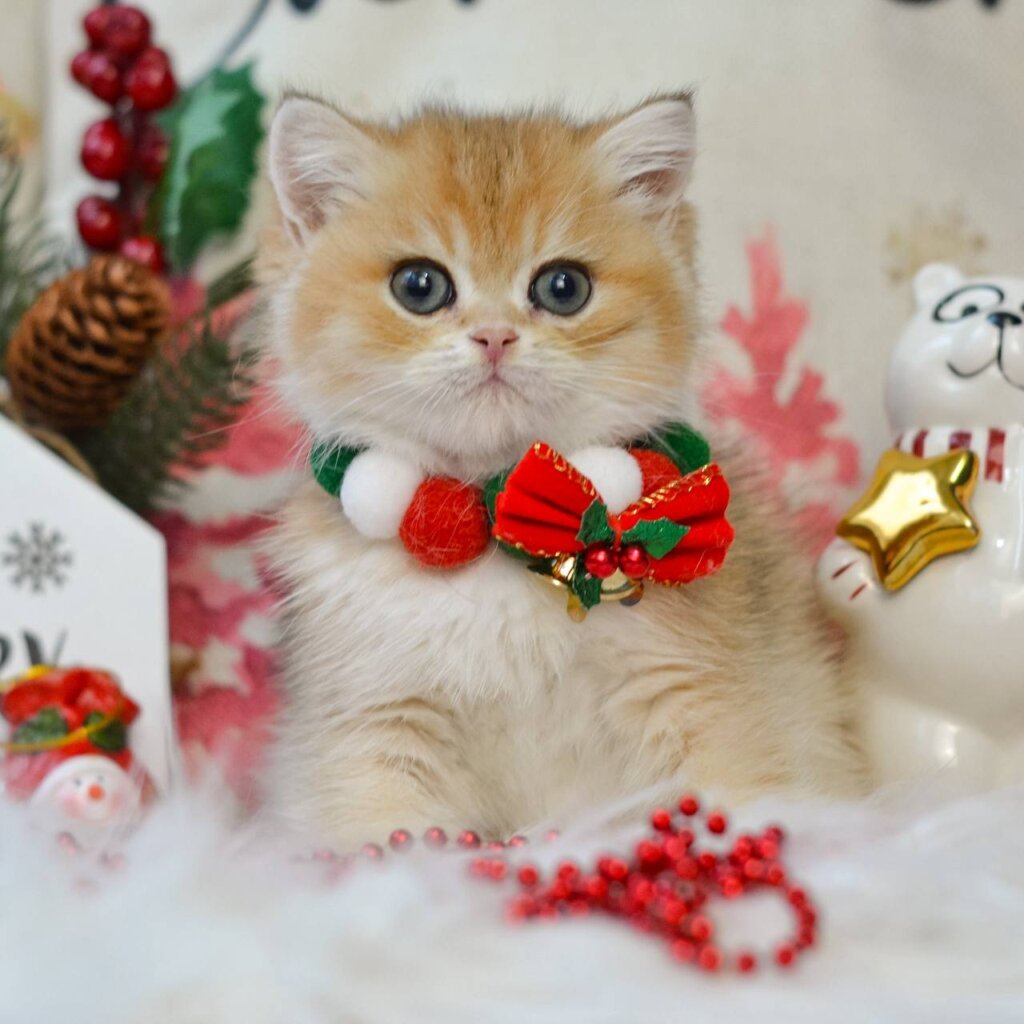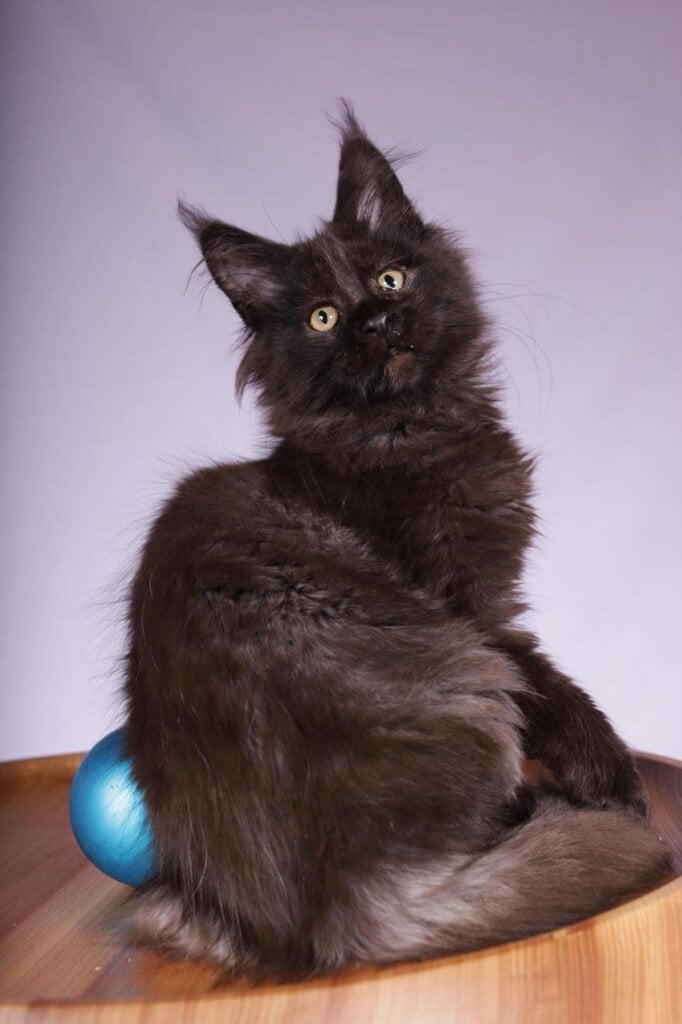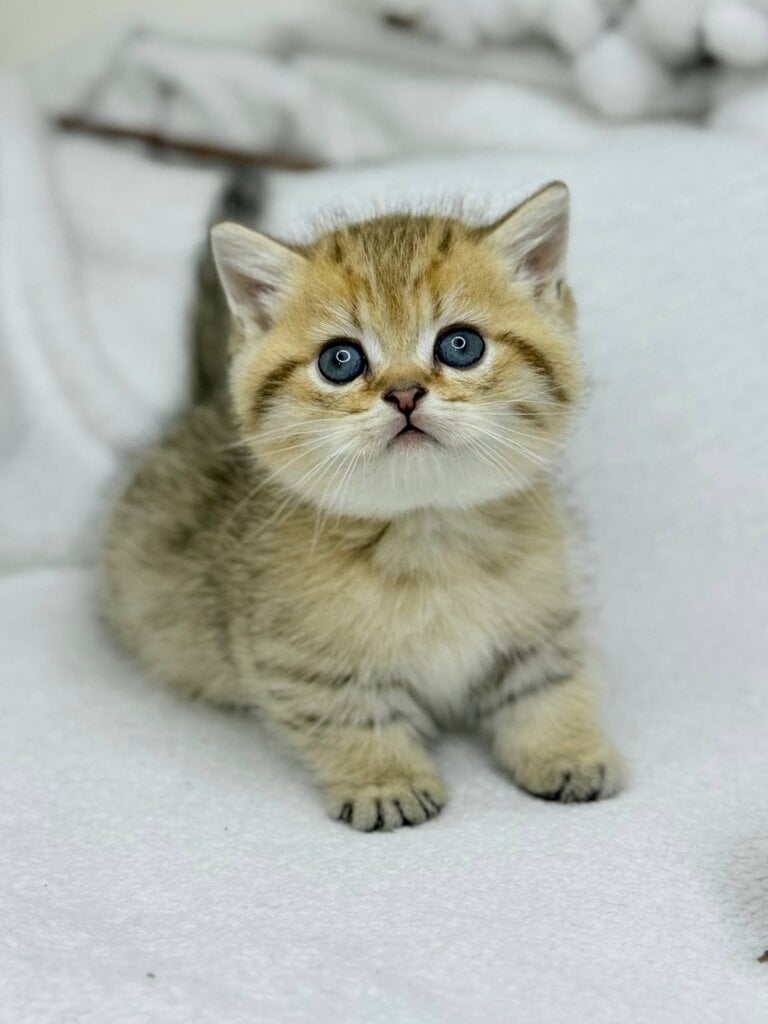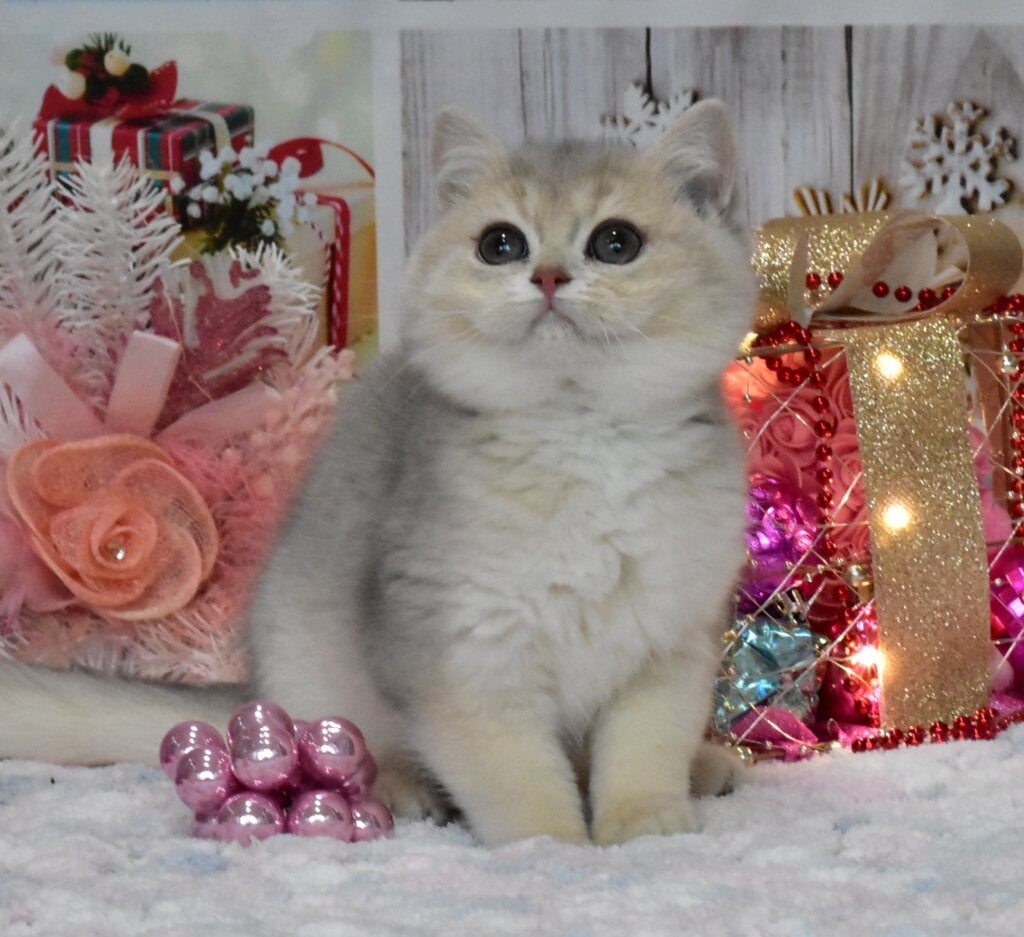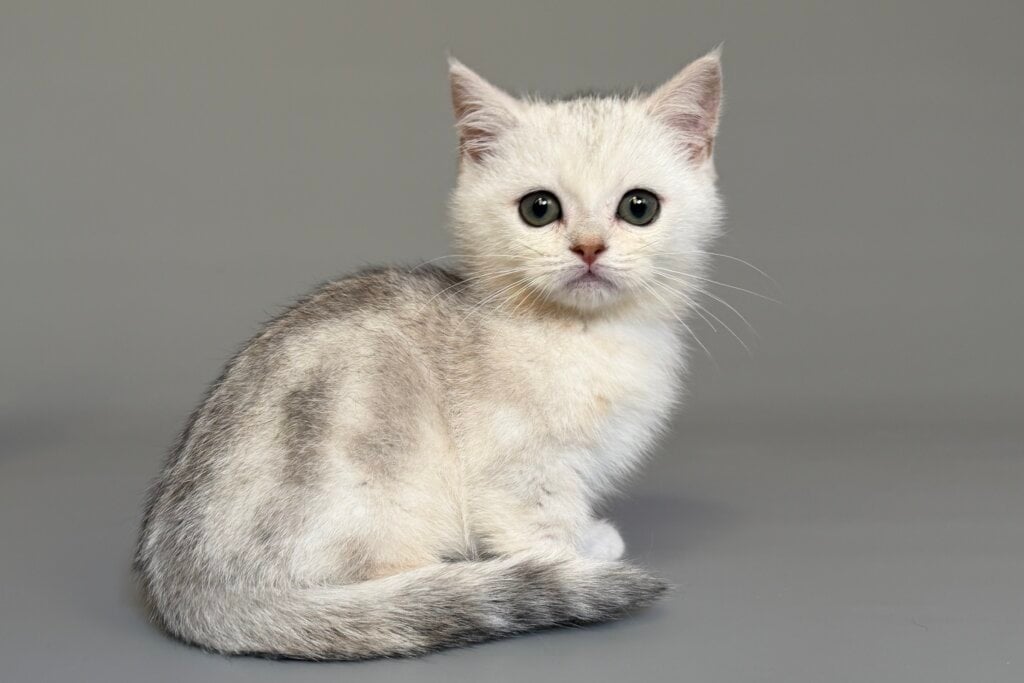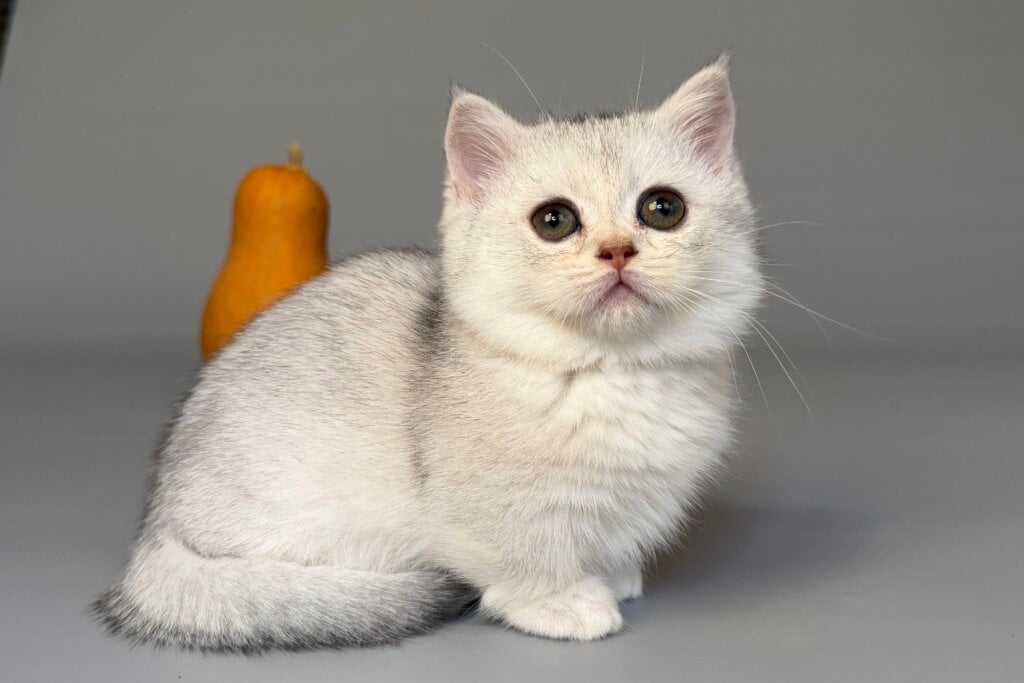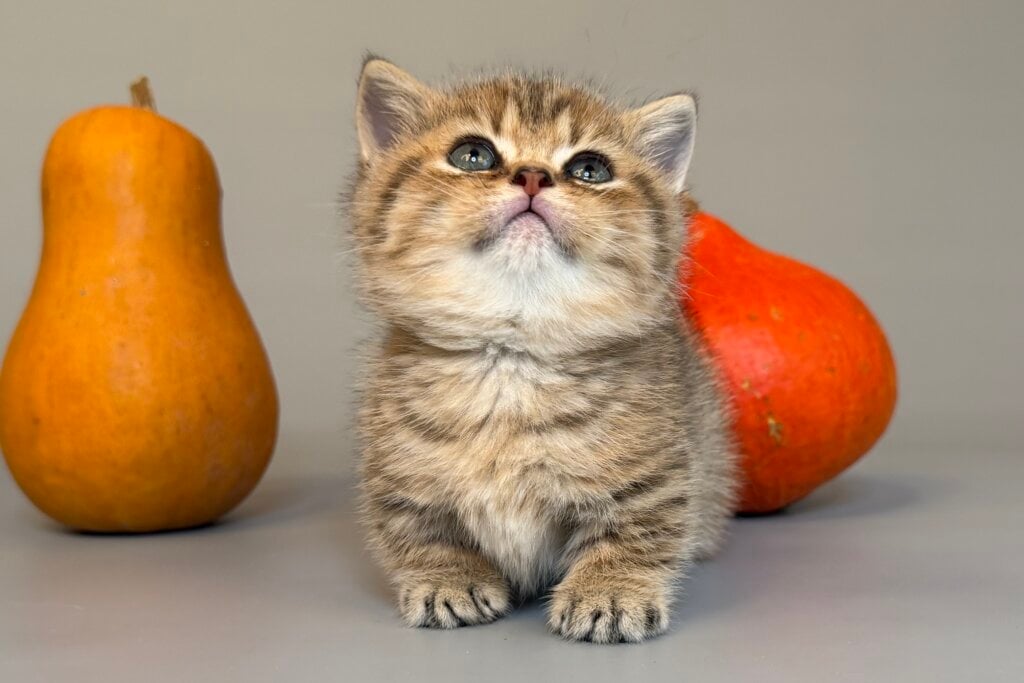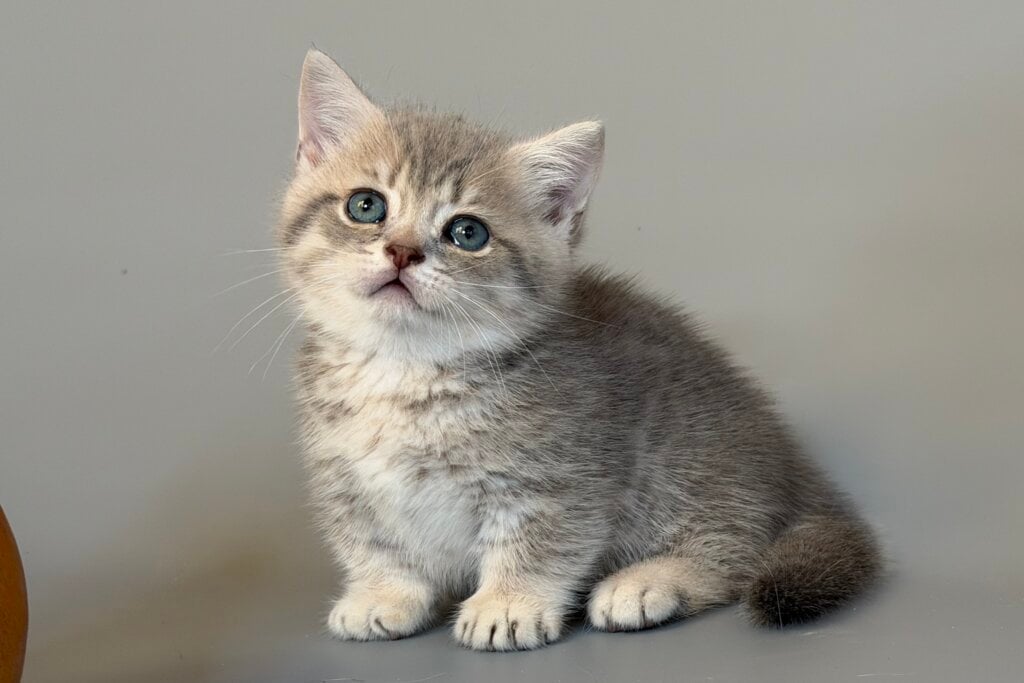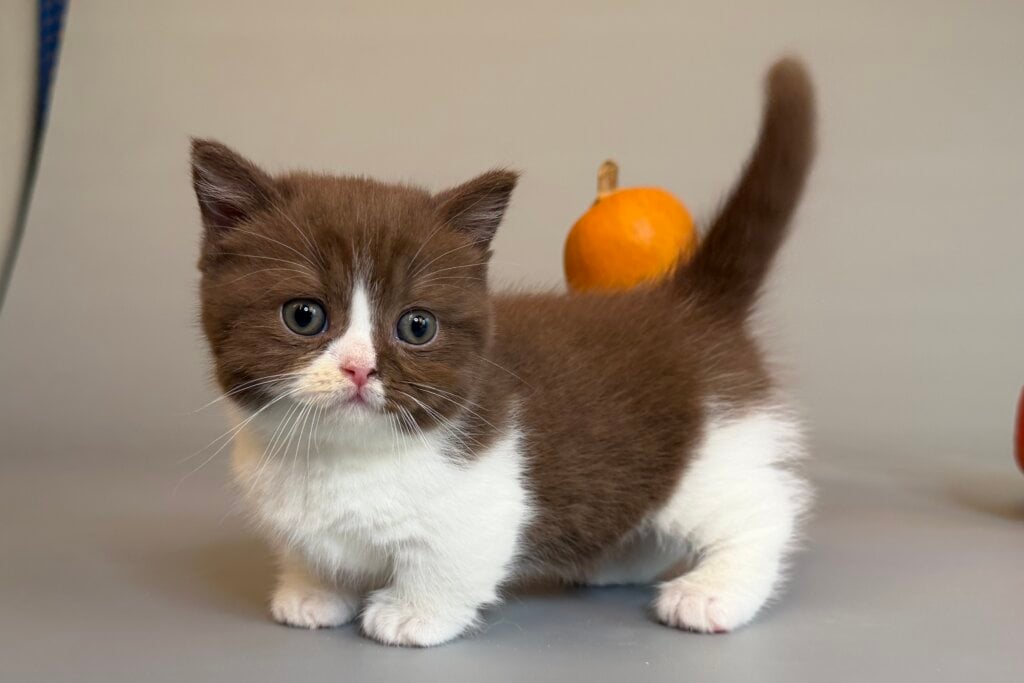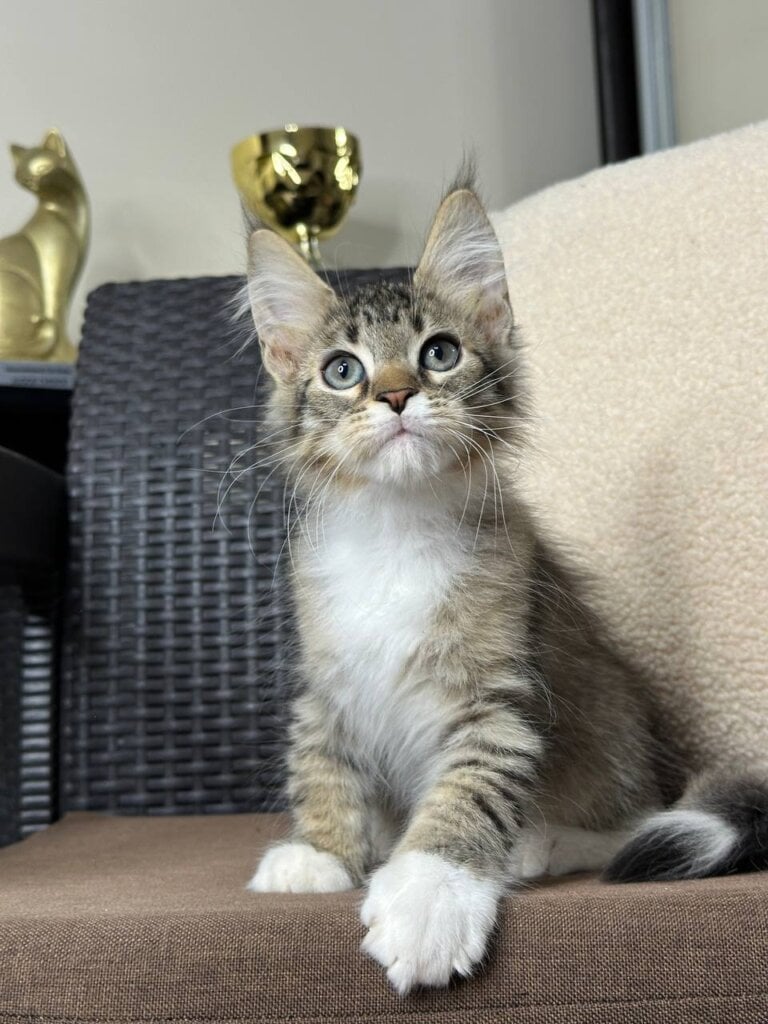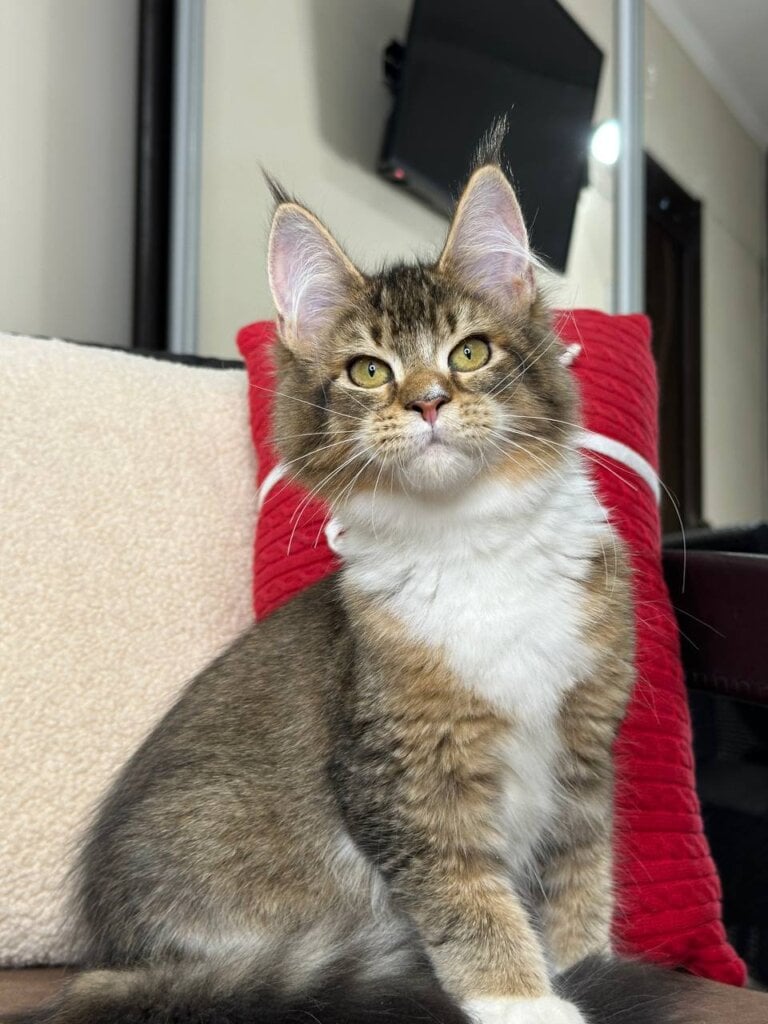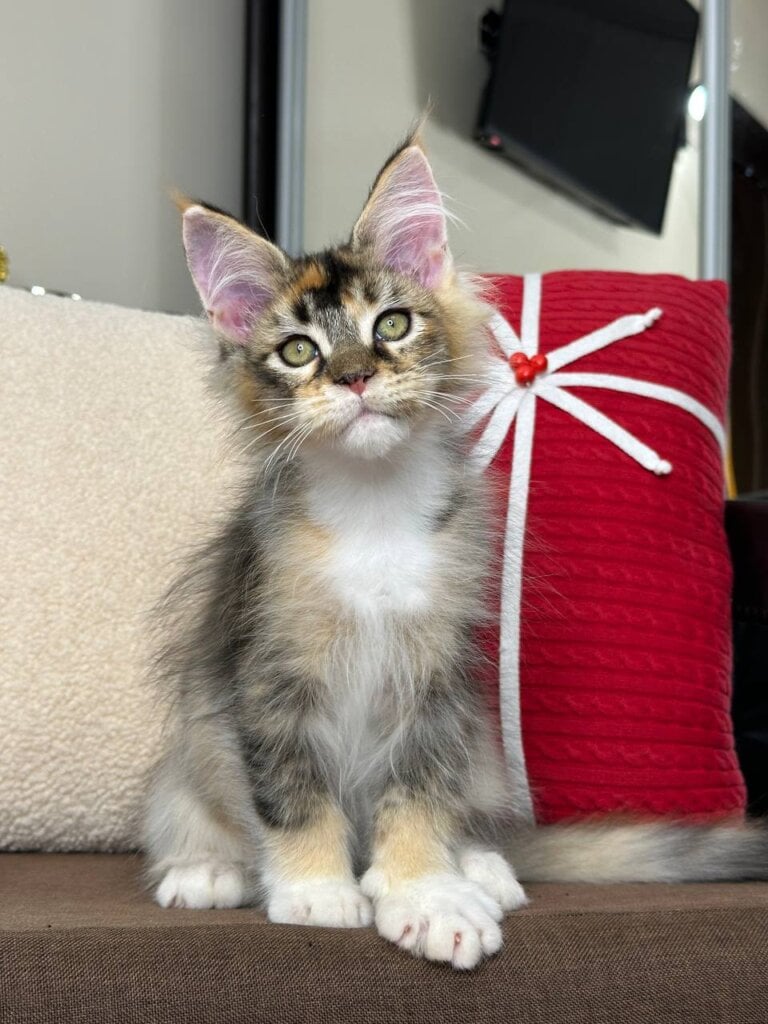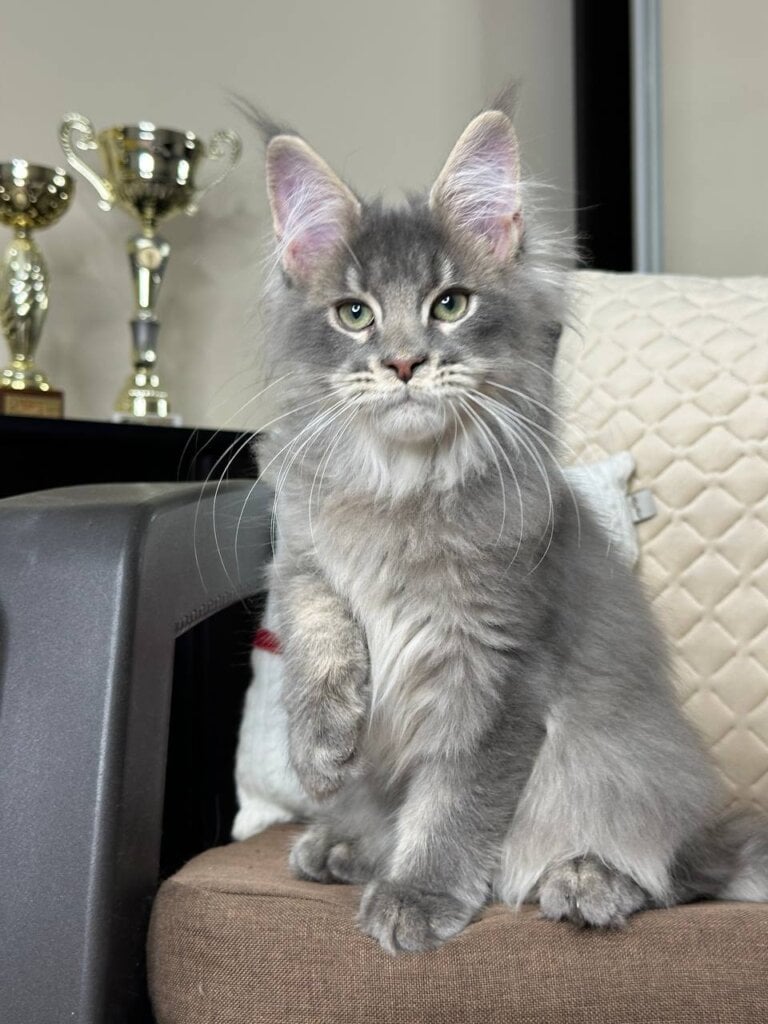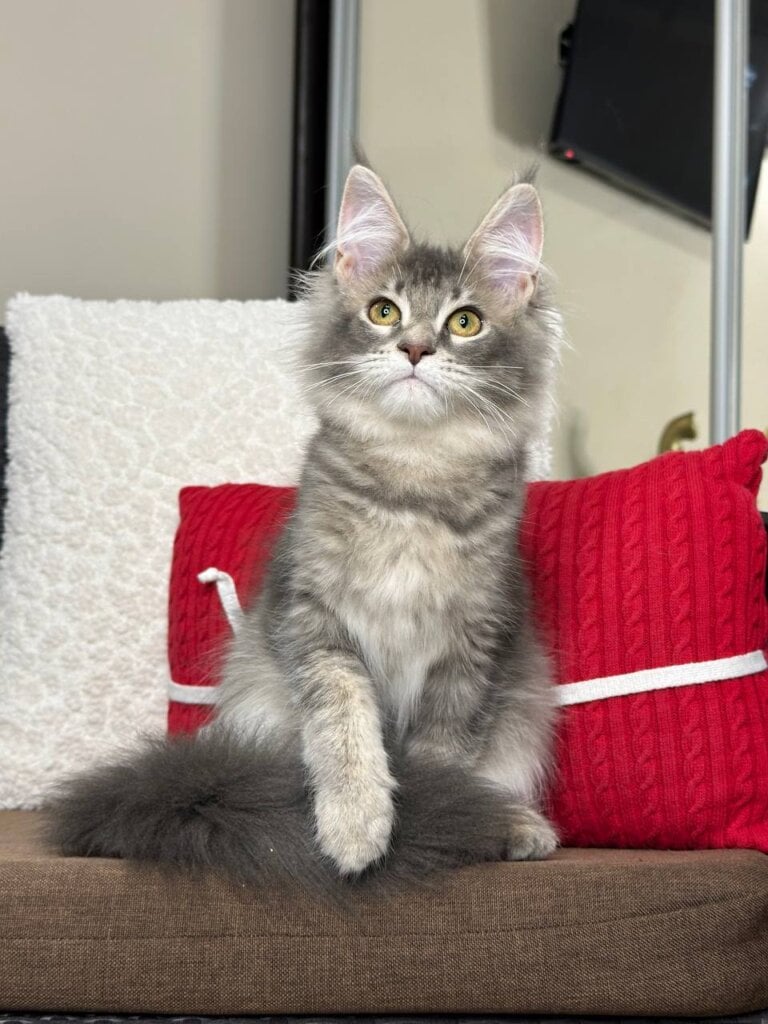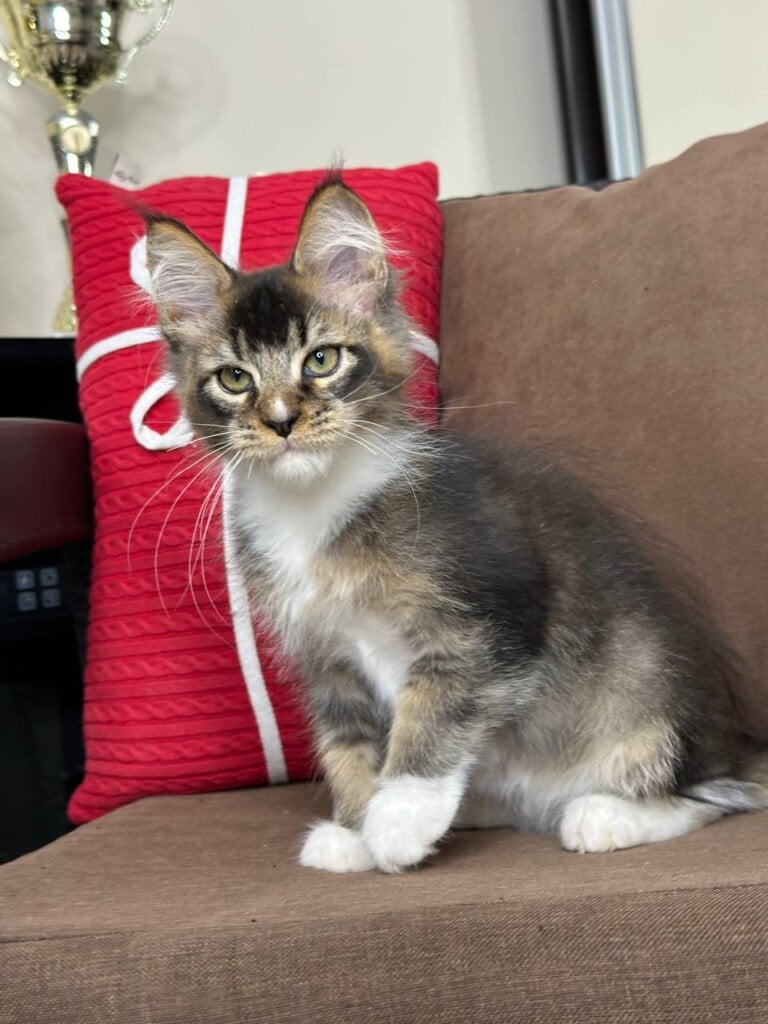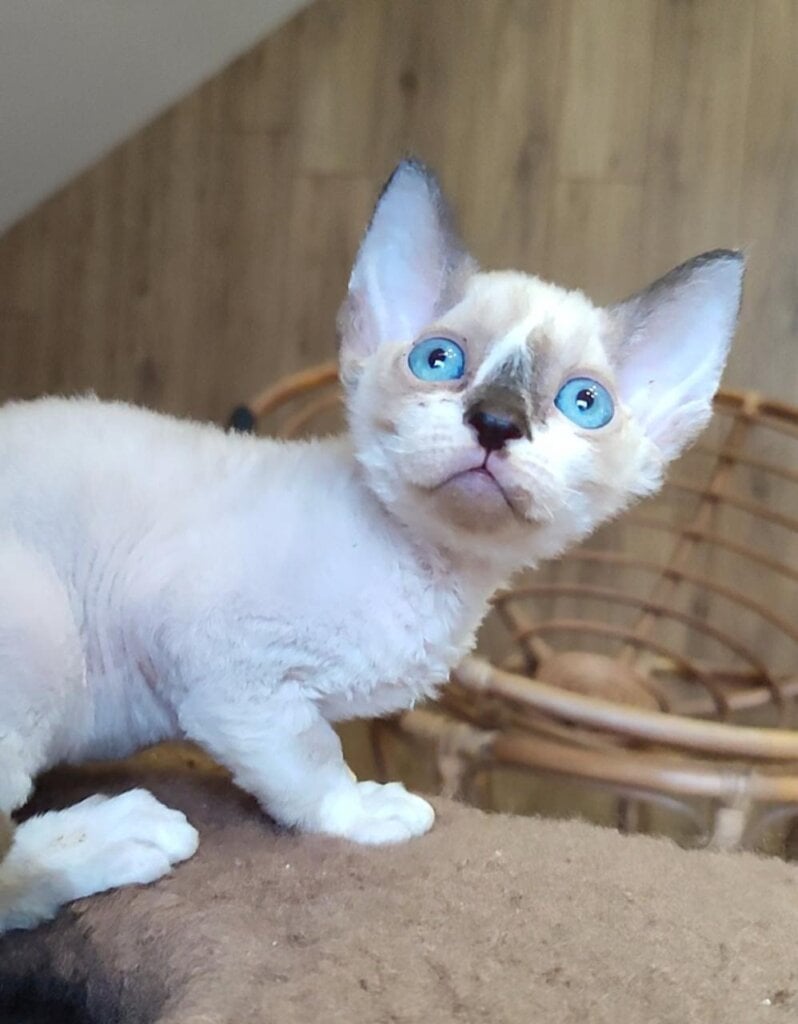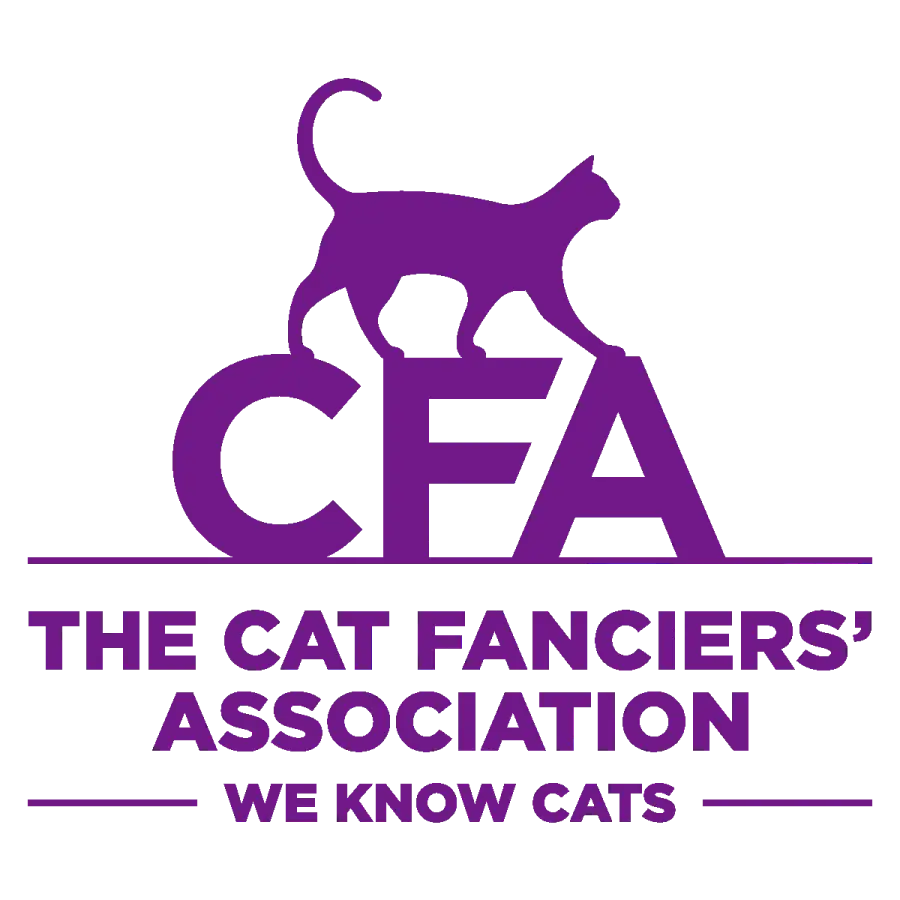Key Takeaways
- Maine Coon cats are one of the largest domestic cat breeds. Their impressive size is no accident, but rather the result of genetics, selective breeding, and proper care. In fact, their growth can continue for 4-5 years, which is more than most other cats would grow.
- As with any breed, genetics play a huge role in their stunning size. Some genes promote longer growth cycles and larger skeletal form than other breeds. Knowing a little about these genetics goes a long way when it comes to understanding their unusual stature.
- Ethical breeding practices, including selective breeding for larger size, have historically helped Maine Coons grow to their magnificent size. Responsible breeders do everything they can to make sure that health and temperament come first, followed by physical appearance second.
- A balanced, nutritious diet is important for appropriate growth in Maine Coons. Providing a diet that has the right balance of nutrients allows them to reach their larger size, but prevents obesity. Prevent with proper nutrition to help keep your cat healthy for years to come.
- Males weigh 13-18 pounds, which is larger than females. Female Maine Coons are usually between 8-12 pounds in size, smaller than males. Regardless of gender, all possess that delightful sweet-natured, mild-mannered personality.
- Being a Maine Coon owner takes a bit more preparation but it’s worth it. Their size means they need more space, regular grooming to manage their thick fur, and close monitoring for health issues related to their larger build.
Maine Coon Size: An Overview
After the war, their size became an even more celebrated aspect of their appearance, so much so that the Maine Coon’s size became a defining feature of the breed. These big bodies are more than simply an aesthetic hallmark, they’re the product of unique aces in their genetic and environmental sleeves.
To understand why these cats are so big, it’s essential to explore the standards, the significance of their size for owners, and to address common misconceptions.
Defining the Maine Coon Size Standard
The Maine Coon’s largeness is more than just hearsay – it’s supported by quantifiable standards. Adult males usually weigh from 18 to 22 pounds with females weighing from 12 to 15 pounds. They can be anywhere from 10 to 16 inches tall.
When you factor in the tail, their length can frequently exceed 38 inches long. When really stretched, some Maine Coons can reach an incredible length of 40 inches from snout to tail bite. Their thick and bushy tails are nearly 14 inches long. This feature contributes to their unique close resemblance to raccoons.
What makes this breed unique is their extended period of growth. Different from almost all other species of felines, Maine Coons tend to grow at a slow but steady pace. Larger Maine Coons take their sweet time growing into their size, sometimes waiting until they are four years old!
It’s important to remember that maturity in dogs goes beyond just physicality, but includes behavioral traits as well. Normally, this process occurs between ages three and five. Max, a Maine Coon, weighed 18 pounds by his first birthday. He didn’t stop once he became an adult, either!
Why Size Matters to Owners
The Maine Coon’s size is part of their charm. It’s true that the Maine Coon’s size creates an impressive physical presence. Along with their massive size comes their sweet and friendly nature, which contribute to them being super family-friendly creatures.
Owners often refer to them as “dog-like” for their playful but loyal characterization. Their size translates to more Momo to cuddle, which is especially soothing for families looking for therapeutic companionship. For kids, their big intimidating but cuddly appearance gives them a feeling of safety and comfort.
Dispelling Size-Related Myths
So even though they’re large, Maine Coons can’t be considered overweight with the right management. Their giant, muscular frame is no accident or the consequence of excessive feeding.
It’s imperative that owners of large cats take an active role in monitoring their health. As well as suffering from inherited conditions such as hypertrophic cardiomyopathy (HCM), which affects an estimated 10% of these cats.
The breed’s unique features, such as an increased incidence of polydactylism, add to their distinctiveness without impacting their overall health or size.
Genetic Factors Behind the Size
Maine Coon cats are known for their gigantic stature. This extraordinary ability is mostly due to their distinct genetic architecture. The interplay of inherited traits and specific growth-related genes sets Maine Coons apart from other breeds, both in size and growth patterns. Shedding light on these genetic factors goes a long way in explaining why these cats can reach such colossal sizes.
Key Genes Influencing Growth
The large size Maine Coons are known for is due to polygenic inheritance. That’s because many genes are involved, contributing to their truly gigantic size. The most dramatic genetic influence has occurred through manipulations of growth hormone regulatory genes.
These genes have a direct effect on growth hormone production. Consequently, they are critical players in defining how big the kitty ends up being. Specifically, if these genes increase the concentration of growth hormone, the Maine Coon will grow larger and more muscular. This breed will end up having a larger physique than kitties with lower activity in this substrate.
Genetics is a big part of the picture when it comes to why the breed grows at such a remarkable rate. Maine Coons develop at a more gradual rate than most other breeds. It can take them upwards of five years to get that big.
This lengthy maturation period allows their bones and muscles to develop more strength. In addition, they need to escape predation and thus adapt to creating an intimidating appearance.
How Genetics Differ from Other Breeds
Relative to other cat breeds, Maine Coons possess distinct genetic characteristics that account for their large stature. Though most domestic cats will mature completely by 12-18 months, with Maine Coons, it’s during this period of time that they are still growing the most.
By 18 months, kids typically weigh about 75% of their adult weight. These increases serve as a reminder to them of the great effect that their genetic disposition can have.
Quarterbacking the entire evolution is selective breeding. Breeders will purposefully breed larger Maine Coons together to ensure the kittens have the same potential to be large.
This practice demonstrates the ways that genetics can be manipulated to create a greater focus on certain traits, size being one of the most prominent, within the breed.
Understanding Genetic Predisposition
Maine Coons’ size isn’t just a matter of how large they get, but how they develop. Some cats in the breed will grow faster than others or slower, depending on their overall genetic profile.
Environmental, particularly nutritional, factors can shape these genetic predispositions. At the base of this lies the genetic blueprint, which is still the biggest factor in determining their size.
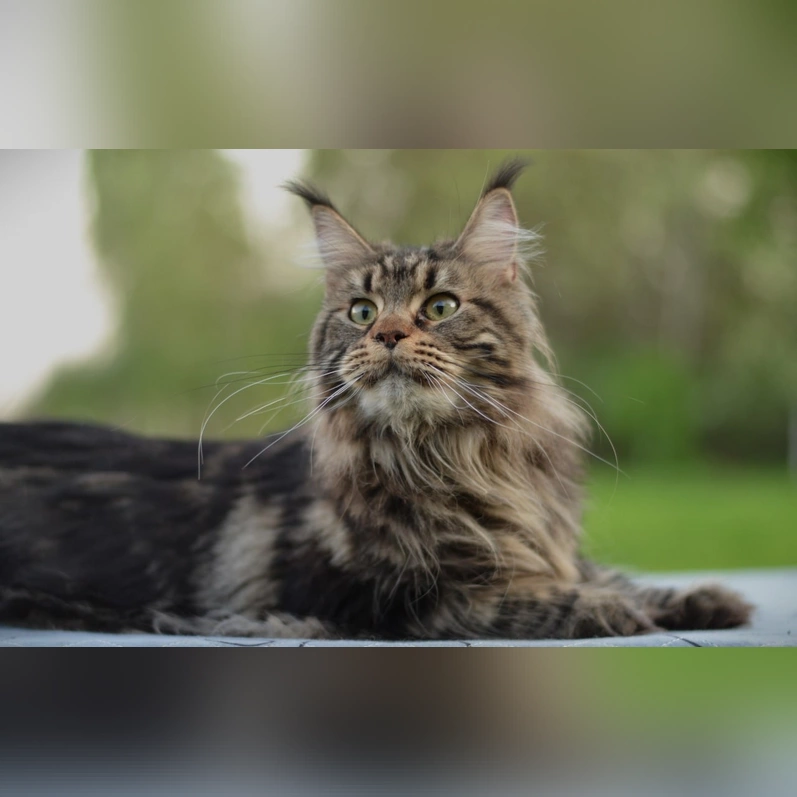
How Breeding Practices Affect Size
The exceptional size of Maine Coon cats isn’t happenstance. Their colossal size is the result of concentrated and highly regulated breeding practices. Often the males range from 15-25 lbs and 10-16” at the shoulder. Some of them, particularly the males, can be over 20 pounds. The breed’s size is due to a fascinating combination of genetics, historical impact, and responsible breeding practices.
Considering these factors helps to understand what has contributed to making Maine Coons one of the largest domesticated cat breeds in the world today.
1. Selective Breeding for Larger Size
Selective breeding is largely responsible for the size of Maine Coons. Breeders have historically done a terrible job when it comes to breeding cats with extreme traits. They favor bigger bone structure, heavier musculature and slower maturation. This slow development, taking up to five years for full physical maturity, allows Maine Coons to grow into their large frames gradually.
By continuing to prioritize these characteristics for decades, breeders have reinforced and amplified the breed’s signature size. Females are smaller than males, ranging in weight from 8 to 12 pounds. Putting aside some extraordinary cases, none will exceed 15 pounds. Intentional breeding like this helps lock in these desirable traits through generations.
2. Ethical Considerations in Breeding
We can’t stress enough the importance of ethical breeding practices to maintain the Maine Coon’s size and overall health. Reputable breeders should focus on genetic health testing to reduce hereditary conditions and work within rigorous breeding standards. Partnerships like the one above with the Cat Fanciers’ Association help encourage that accountability.
Polydactylism is an unusual trait, but occurs in almost 50% of Maine Coons. Rather than considering it a defect, many people embrace this condition as a characteristic of the breed. For one, responsible breeders encourage balanced nutrition and appropriate amounts of exercise. This method promotes the natural growth of a cat, helps maintain their optimal weight and size, and prevents any chance of artificially inflating it.
3. Historical Breeding and Modern Size
The cause of the breed’s size can further be found through its evolution. Life in the challenging northeastern climates of early Maine Coon history would have favored a larger, hardier cat that survived and thrived. Dedicated efforts by groups like the Central Maine Cat Club and the Maine Coon Cat Club have preserved these traits.
Maine Coons are very, very popular right now. In fact, they’ve moved up to the third most popular cat breed in the United States.
Growth Stages: Kitten to Adult
Maine Coons are famous for their extraordinary size, a trait that grows more pronounced over the course of a few years. Learning about their growth stages allows us to better understand and admire the wonderful evolution these felines make from little furballs to regal adults. Genetics, nutrition, and overall health play a role in their size too. Every stage of an animal’s development is important in determining what they will ultimately become.
1. Kitten Growth Timeline
Maine Coons undergo extensive and rapid growth during their first year of life. At birth, they are a few ounces. By the third month, they begin to show clues about how big they’re going to be. From three to seven months, babies generally weight about 2.2 pounds per month.
This developmental stage includes a great deal of fast-paced physical growth and an influx of energy. During this stage, a nutrient-dense diet, high in animal proteins, helps support healthy muscle development and optimal energy during play and activity. Without nutrients to fill them up, they will overeat to make up the difference and can be at risk of unhealthy weight gain.
Larger male Maine Coon cats can weigh more than 15 lbs. By their first birthday, most Maine Coons should weigh at least 10 lbs. They slumber as much as 16 hours a day to aid their development. Making a warm snug place to sleep promotes their growth.
While they spend this period swatting at everything that moves, their rambunctious playfulness makes for a fit and agile physique that sets the stage for their impressive adult form.
2. When Do They Stop Growing?
Maine Coons take longer than most cat breeds to reach full maturity. Most domestic cats are finished growing by the time they reach one year. Unlike other cat breeds, Maine Coons continue growing even after they turn two, with some not reaching their adult size until the age of four!
By the time they’re two years old, many display their impressive bodies – massive muscular builds, thick fur coats, and their unique jaguar-like facial markings. These unusual physical traits are the breed’s most distinguishing features, and they make them really unique compared to other cats.
3. Monitoring Growth and Development
Consistent vet appointments are key to monitoring your Maine Coon’s development. Keeping careful track of their weight and health helps confirm they are progressing developmentally. As they age, their nutritional needs change.
Older Maine Coons, nine years or older, often need changes made to their daily calories as they will be less active than before.
Male vs. Female Size Differences
With the Maine Coon breed known for their gigantic size, being able to tell the difference between male and female lays the basic foundation. These differences are not just in weight and height, but in their entire physical presence and demeanor.
Average Size for Males
Male Maine Coons are known for being big, BIG boys. These charismatic felines tip the scale between 15-25lbs. They are a small herding breed with a shoulder height of 10 to 16 inches. In fact, they can grow up to 40 inches! This contributes to their bushy tails, making them one of the largest domesticated cat breeds.
This huge size certainly adds to their reputation for being gentle giants. Maine Coons don’t develop in a day. They grow slowly, not reaching full size or weight until they’re three to five years old.
Male Maine Coons are big but they feature a solid and powerful body structure. This remarkable musculature further highlights their already massive frame. Their wide pectoral flippers and powerful tailstock are especially striking.
These characteristics are what make them unique compared to other breeds. Their size and playful and social nature make them pretty impressive. This mix of traits makes them a popular option among families looking for a fun, loving companion.
Average Size for Females
Females, though somewhat smaller than males, still have the equally impressive qualities that are hallmarks of this hardworking versatile breed. An adult female Maine Coon typically weighs 10 to 15 pounds. At the shoulder, they are just a little less tall than their male counterparts.
Their bodies are like a ballerina’s, but with the strength of an NFL linebacker. This is a perfect fusion of grace and power.
What distinguishes female Maine Coons from other qualities is that they are gentle and affectionate. Frequently characterized as “queenly,” females are known to be patient and motherly, with a graceful demeanor.
Wariness and grace make them seem sharp and sleek, rather than the sometimes rowdy exuberance exhibited by males. Though these felines are on the smaller side, they make up for it with their breed’s trademark enjoyment of life.
To those who crave a quiet, contemplative cat, they serve as wonderful companions.
Comparing Male and Female Growth
The distinct growth patterns of male and female Maine Coons serve to emphasize their exceptional size differences. Males are usually 10-15% larger than females, a difference that is greatly magnified as they mature into adult platypuses.
Their slower maturation process means that male and female alike need the right nutrition and husbandry to grow to their full potential. The male’s bigger frames require more calories and exercise by default to stay healthy.

Nutrition’s Role in Maine Coon Growth
One of the main reasons that Maine Coons stun everyone with their size. Females generally weigh 13 to 18 pounds, while males can weigh 15 to 25 pounds. We cannot deny that genetics is a crucial part of growth. The right nutrition is equally important in allowing them to achieve their full potential.
Providing a balanced diet that caters to their individual needs plays a determining role in making sure their development is both healthy and sustainable.
1. Optimal Diet for Growth
Maine Coons do best when fed a nutrient-dense diet packed with high-quality protein, which helps them maintain strong muscle and promotes better overall health.
Nutrition considerations are vital in this context. Protein needs to make up 30-40% of your daily calories. It provides all the essential amino acids your body must have to construct and restore tissues. Chicken, turkey, fish, and other lean proteins are great options that complement their natural biological needs.
Fats are equally important in their diet. Quality fats, such as fish oil or chicken fat, are concentrated sources of energy that helps maintain a healthy and active lifestyle. They’re essential to achieving that glossy, healthy Maine Coon fur.
Carbs, even though they are the secondary nutrient in importance, can still work as an extra source of energy. Opting for fiber-rich ingredients such as sweet potatoes or pumpkin can help support healthy digestion as well.
To avoid your Maine Coon growing too fast, provide consistent meals at set times each day. Feed them premium cat food that’s specifically designed for large breeds. Brands that cater to the dietary requirements of active and larger cats often include the right balance of nutrients for Maine Coons.
2. Supplements and Their Impact
These are some instances in which supplements may prove beneficial to your Maine Coon’s growth and health. Omega-3 and Omega-6 fatty acids, which are commonly found in fish oil supplements, promote joint health and keep their coats as impressive as they should be.
Glucosamine and chondroitin supplements are beneficial, helping to maintain strong joints as these cats tend to get bigger through the years. Supplements definitely play an important role, but they should never substitute an appropriate diet.
In fact, over-supplementation may bring about adverse imbalances and health challenges. We always recommend consulting a veterinarian before introducing new dietary supplements into their routine.
3. Avoiding Overfeeding and Obesity
Even with their large size, it’s important to not overfeed Maine Coons as they are prone to obesity, like many larger breeds. This can put a lot of pressure on their joints and contribute to serious health issues such as diabetes or heart disease.
To avoid this, it’s crucial to keep an eye on portions and calorie consumption. Feeding two to three portions per day controls their energetic behavior, while avoiding overfeeding.
Maine Coon Size Compared
Maine Coons are popular and well-loved cats, famous for their impressive stature and size intrigues many. To better understand their formidable size, see them compared with average house cats and other large breeds. Plus, learn about what’s fueling their extraordinary expansion.
1. Compared to Average Domestic Cats
The average weight for most domestic cats is 8-10 lbs. Unlike their Maine Coon counterparts, Maine Coons are indeed much heavier and larger. Male Maine Coons typically weigh 15 to 25 pounds (6.8 to 11.3 kg).
Females are slightly smaller, ranging from 10 to 15 pounds (4.5 to 6.8 kg). Maine Coons are big cats; they grow fast even as kittens. We’ve seen kittens attain weights of 5 pounds (2.3 kg) by just 3 months old.
A full grown Maine Coon kitten can weigh as much as an adult domestic cat. This can occur as early as before the kitten enters the teenage years!
The overall length of these cats is a distinguishing feature. Stewie, a Maine Coon, was the world’s longest domestic cat. He measures an incredible 48.5 inches (123.19 cm) long!
This extraordinary size is what primarily separates them from other standard house cats. Even the length of most house cats would be dwarfed by him.
2. Compared to Other Large Breeds
Even in the company of other large breeds, Maine Coons don’t just compete. They dominate. Breeds such as the Ragdoll and Norwegian Forest Cat are large breeds.
They typically do not get to the weight or length of a Maine Coon. Raccoons are excellent, medium-sized animals with which to compare. They weigh usually from 7.7 to 20 pounds (3.5 to 9 kg), which is less than an average male Maine Coon in size.
Ludo, the heaviest Maine Coon ever recorded, weighed in at an astounding 34 lbs. That weight surpasses all but the largest raccoons and giant cat breeds!
3. Size Differences Explained
Their genetics largely explains the size of Maine Coons. Their strong stocky shape and long, muscular frame have been accentuated by selective breeding.
Their diet is critical. Their diet is necessary to understanding their size. Maine Coons need a healthy diet with plenty of proteins in order to help their massive bodies in becoming muscles and staying healthy.
Without the right nutrition, their size potential can’t be realized.
Caring for a Large Maine Coon
Maine Coons are known for their large size, which sets them apart. Not only are Maine Coons cuddly and fun, this unique mix of characteristics has earned them the title of the internet’s favorite pet. Caring for such a big breed involves careful planning and a serious long-term dedication. From diet to play, every part of their care feeds into their health, often directly. This involves addressing their spatial needs as well as their health needs.
1. Space and Environmental Needs
Maine Coons’ large size means they prefer living spaces where they have enough room to roam and explore. An open home with plenty of vertical space to climb and expand is best suited. Cat towers, scratchers, and climbable furniture provide large felines safe ways to express their wild side.
These fun features will help to keep them both active and entertained! Interactive play sessions using toys like feather wands or laser pointers are a great way to stimulate their minds and keep them physically fit. Outdoor adventures in safe, enclosed environments can further meet their inquisitive nature and desire for play.
If they don’t stay active enough, they can easily gain weight, which is never a good thing and can lead to serious health problems.
2. Grooming a Large Cat
The Maine Coon’s thick, water-repellent coat needs regular brushing to avoid matting and keep it looking its best. At least two to three times a week, brush your Maine Coon’s fur for maximum care. Note that older cats will require more regular grooming as their fur texture will alter in their later years.
Seasonal shedding, particularly during spring and fall, calls for extra attention to remove loose hair and reduce shedding around the home. Routine nail trimming and clearing of the ears is an essential step in their grooming routine.
It’s these practices that allow them to shine their brightest. They’ll ward off bothersome problems such as ear infections and overgrown nails.
3. Health Considerations for Big Cats
Maine Coons have unique health issues associated with their large size and high genetic variability. Introduce the right nutrition. Overfeeding is a serious issue, as large cats are prone to obesity. Feeding them high-quality, nutrient-rich cat food appropriate for their size and activity level is essential.
Vet care. Regular vet visits play an important role in keeping your Maine Coon happy and healthy. Now consider that 30% of these cats have a genetic predisposition for hypertrophic cardiomyopathy, a life-threatening heart disease.
Keeping them active and treating any health issues quickly can lead to their average life span of 12.5 years.
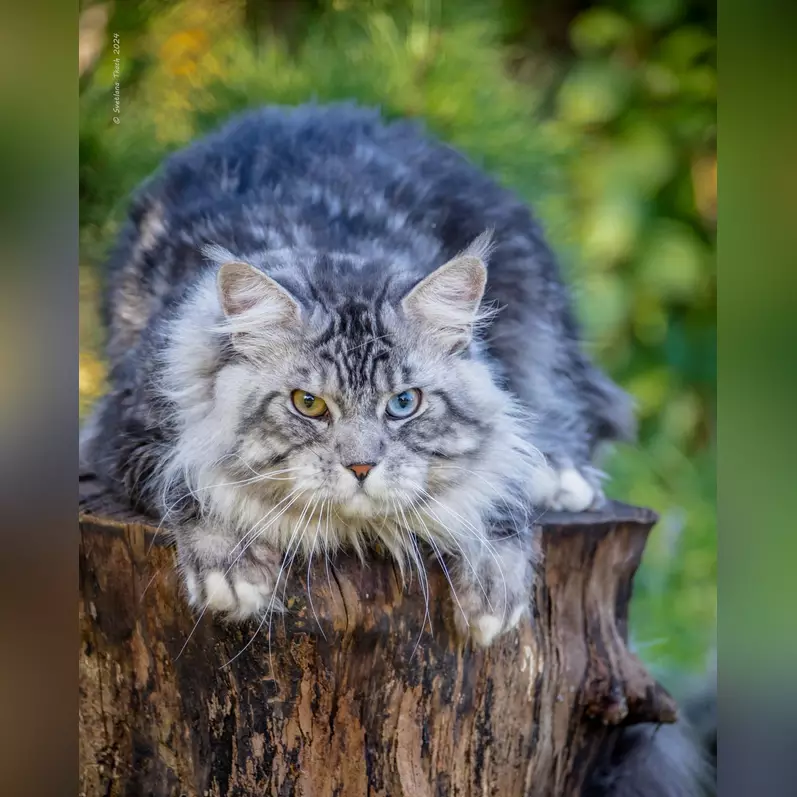
Health Implications of Large Size
Famous for their large size, Maine Coons have some big health issues to consider that are tied with their larger frames. Yet it is their smallness that may be their most endearing quality. It also serves to increase their vulnerability to specific health challenges. Recognizing these health implications is key to ensuring their future health and empowering them to live long, healthy lives.
Potential Health Risks
With large cats such as Maine Coons, they’re already putting extra stress on their muscles, joints, and overall skeletal structure. This causes degenerative problems like hip dysplasia and arthritis – disorders that are prevalent in larger breeds. Keep an eye out for red flags such as in obvious muscle wasting in the rear legs.
A swaying gait or leaning stance when sitting or recumbent are equally concerning signs. Their size can make it challenging for them to jump or move easily, which might become evident, particularly in older and larger animals.
Hypertrophic cardiomyopathy (HCM) presents a third serious hazard. This genetic heart condition affects an estimated 34% of Maine Coons in the United Kingdom. Cats affected by HCM can start to show symptoms as early as kittenhood, usually around three to four months of age.
These symptoms frequently manifest as muscular convulsions, impaired respiration, or even loss of ability to leap because of lethargy. When not appropriately treated, HCM can progress to heart failure. This development may happen over days or months and set off attacks of shortness of breath.
Monitoring for Health Issues
Proactive monitoring is essential to preserving their health. As the condition progresses, owners should be alert for early signs of pain. Keep an eye out for signs like tidal muscular contractions, decreased behavioral activity or climbing ability.
By monitoring your pets’ weight and muscle tone on a consistent basis, you can notice and address issues before they become serious complications. Follow their actions with a hawk-eye. Watch for symptoms such as an unsteady walk or trouble leaping, as those reflect early warning signs of potential joint and/or heart concerns.
Veterinary Care for Large Breeds
Routine veterinary care is important for Maine Coons to meet their size-related needs. Screenings for HCM, preferably with a veterinarian experienced in large breed dogs, are key to detecting heart conditions in the early stages.
Personalized support and guidance goes a long way in protecting your joints and muscles! Think about changing your diet or using supplements to improve the health of your bones and muscles. Giving them the best care possible allows these magnificent felines to thrive and make the most out of their lives.
